Kerala Backwaters Cruise on the Vaikundam
By Heidi Sarna.
Updated March 2025
I’ve been on many small-ship cruises all over the world. But this one was different.
India is a vast country with a diverse geography. There are soaring snow-capped mountains, dry dusty deserts, tropical jungles and thousands of miles of coastline.
Many first timers to India do the Golden Triangle circuit in the north, visiting the historic and teeming cities of Delhi, Jaipur and Agra, and the holy ghats of Varanasi.
For repeat visitors to India who want to explore a more remote part of the country, the long thin state of Kerala in southern India, with its 400 miles of shoreline along the Arabian Sea, is a great option.
Kerala is known for its backwaters, a network of canals, rivers and lakes popular for houseboating aboard the region’s traditional wood and thatched boats called kettuvallam.
The barge-like boats were originally designed to transport rice, coconuts and spices to and from the ports of Kochi (also known historically as Cochin by various European powers) and Alappuzha along India’s Malabar coast, for centuries major points in the Europe-Asia spice trade.
Today, a Kerala backwaters cruise has come to be known as an exotic and off-beat travel experience for those who want to go deeper into India’s natural bounty and fascinating history and culture.
The Vaikundam on a Kerala Backwaters Cruise
There are reportedly some 1,400 houseboats in Kerala’s backwaters, most with a few basic cabins, dining area, and sliver of open-air deck, that offer tourists short two- and three-day cruises.
The 18-passenger Vaikundam is a Kerala houseboat that stands apart from the crowd.
While it originally offered short cruises when it was launched in 2000, last year after an extensive renovation, Vaikundam began focusing on weeklong backwaters cruises that include narrow canals and shallow passages other boats can’t access.
I joined an October cruise aboard the Vaikundam with my friend Harman; it was the kind of unusual quirky small-ship cruise that greatly appeals to me and I wasn’t disappointed.
Constructed of teak, wild jack and jack tree wood, Vaikundam has a pleasantly rustic dining area, bar and lounge, and roomy open deck at the bow, all accented with Indian cotton fabrics.
Air-conditioned cabins are cozy with large windows and chunky wooden doors and furniture.
Bathrooms are basic with marble-clad showers. Our beds were very comfy and we slept like logs all week.
RELATED: Heidi Reports on Seeing the Remote Side of India by Boat for CNBC.com.
Subscribe to our monthly small ship cruise email
Subscribe to QuirkyCruise.com for monthly curated newsletters highlighting our top small cruise ship reviews, round-ups & offers!
Cruising for Cruising Sake on a Kerala Backwaters Cruise
A weeklong cruise on Vaikundam covers about 100 miles in total, between Kochi and Alappuzha, but not in a straight shot. The boat slowly zigzags at no more than four or five knots though the flood-prone backwaters, sometimes backtracking, to get to the most scenic areas.
You’ll often feel like you’re in the middle of nowhere, pushing through water hyacinths, and gazing out at the ubiquitous rice fields and stands of palm, mahogany, tamarind, banana, and betel nut trees.
One morning, we cruised down one particularly slender canal. At one point, those of us on the open-air bow had to duck so as not to be whacked in the head with a tree branch.
We cruised for several hours each day, greatly enjoying the ride, and then tied up each evening for the night.
Typically, we enjoyed a village walk before dinner with our guide Kabir, treated to glowing orange sunsets nearly every time.
The Daily Excursions on our Kerala Backwaters Cruise
One or two excursions each day were done by foot or mini-bus. We visited two Dickensian-like workshops, where metal mirrors and brass bells are made in the old ways — open flames, basic tools and craftsman sitting on the ground hunched over their work.
On our daily village walks, Kabir pointed out the flora and birds as we walked past locals doing what their families have done for generations in Kerala’s backwaters — cleaning freshly-caught fish along the canal, beating laundry against rocks at the water’s edge and bathing in their white mundus (a Kerala-style lungi).
Along the way, we visited a boat building yard, where traditional kettuvallums are made by stitching wooden planks together with coir (coconut fiber) rope. Kabir also pointed out the many sail-like “Chinese fishing nets” that are a common sight throughout the backwaters, as are Kerala’s famous snake boats — long ceremonial (and one-time war) canoes now used for special occasions.
Traditional performing arts were weaved into the itinerary as well. One afternoon we got a fascinating insider look at the elaborate make-up and costume preparation that goes into a theatrical Kathakali dance performance — a mellow-dramatic dance form that tells stories from the Hindu epics.

The elaborate preparation needed for a traditional theatrical Kathakali performance we enjoyed. * Photo: Heidi Sarna
Another day we watched an age-old martial arts performance, called kalaripayattu, some segments with knives and spears. Mid-way through the cruise, a troupe of young girls and their teacher performed classical dances for us on the bow before dinner.
Throughout the week, Kabir framed the region’s history and culture by telling us about the Hindus, Jews, Christians, and Muslims who came to Kerala to trade spices with the Arabs and Chinese, long before the Portuguese, Dutch, and British came to stake their claim in the lucrative business of black pepper, cardamom, cloves, cinnamon, chilis and more. And of course, the immigrants brought their religion with them.
Houses of Worship Along the Way
In Kochi, we went inside the lovely 16th-century Paradesi synagogue with its beautiful Belgian glass chandeliers.
We also saw the 500-year-old Portuguese church where explorer Vasso da Gama was buried in 1524, and in Champakulam, admired the grand old St. Mary’s Basilica with its ornately painted wooden interior.
Catholic churches were ubiquitous, with many being white-washed, and others painted in pastels.
We visited several of Kerala’s Hindu temples, most low and flat (in contrast to the tall colorful gopuram towers of some Hindu temples in southern India) with horizontal wooden planks and niches for small oil lamps.
One temple we visited had a resident elephant who lived under a tall open-sided shed. Its legs were chained and it was fed bundles of fresh grasses by its keeper; captive yet coddled. While it seemed cruel to foreign eyes to see the giant animal in shackles, Keralites revere elephants and for centuries they’ve been an important part of religious ceremonies and festivals.
The Thuravoor Narsimha Hindu temple we visited at the end of the cruise near Kochi was the scene of such a procession.
It happened to be an auspicious day in the Hindu calendar, Pooram, and so we witnessed a dozen elephants adorned in gilded festival regalia being paraded around the temple grounds, accompanied by rhythmic drumming and the squawking of the clarinet-like nadasvaram. A bare-chested priest sat astride each elephant’s neck, and handlers or mahouts were at their beck and call.
It was a sight to behold.
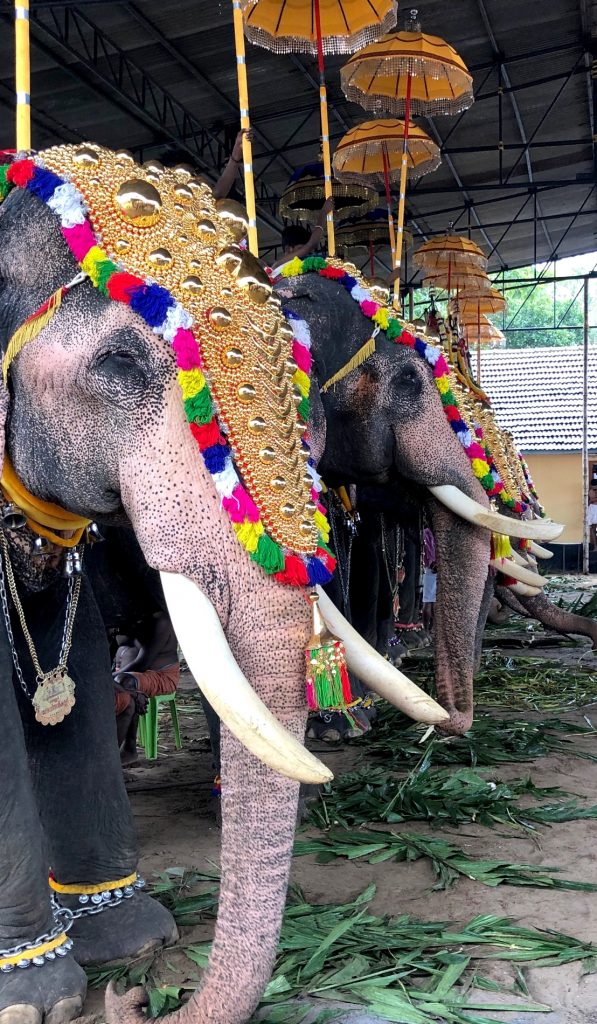
An auspicious day in the Hindu calendar, Pooram, saw these temple elephants adorned to the hilt. * Photo: Heidi Sarna
Daily Life in Kerala
Maybe most appealing about our week on the Vaikundam, was being privy to a slice of real life along the banks of the backwaters and in the villages and small towns we visited. From markets and stores, to buskers and street vendors, to families and folks out and about on their daily commutes, India is a fascinating place for people watching.
Avian Delights on our Kerala Backwaters Cruise
For birders, the Kerala backwaters are cause for major delight. Our guide Kabir had an eagle’s eye for spotting birds in trees, flying overhead and fishing in the water. Passengers’ zoom lenses were out in full force.
From fruit bats with a wingspan of a meter to brilliant kingfishers and bee eaters, flycatchers, larks, parrots and so many more, our avian friends swooped, called and flapped to and fro across Vaikundam’s bow.
Egrets, heron, ducks, and elegant snake birds (so named for their long thin necks) were easy to spot on excursions in small skiffs, which we enjoyed on more than one occasion.
One early morning we visited the Kumarakom Bird Sanctuary on the edge of Lake Vembanad, which was carpeted in brilliant fuchsia water lilies. We traveled in a private sightseeing boat and the mini cruise was a bird and nature lovers’ paradise.
Delicious Home Cooking on the Vaikundam
For many of us, the biggest joy was eating. A range of Indian dishes were served buffet-style on board, and there was also a delicious lunch and a dinner planned in local homes on shore.
South India’s beloved fresh fish, caught nearby and cooked whole, was always on the menu, from pearl spot to silver mullet, snapper, catfish and other varieties.
For anyone who craves some western comfort food, the chefs will happily comply. The beauty of a small-ship cruise like the Vaikundam, is that service is personal and flexible. “No” is rarely heard and there are few “rules.”
There were excellent vegetable dishes made with okra, pumpkin, lentils and carrots, and Kerala rice served straight up or as steamed idly and puttu “cakes.” There was butter chicken, mutton dishes and the range of breads India is so well known for, including fried puri and parathas.
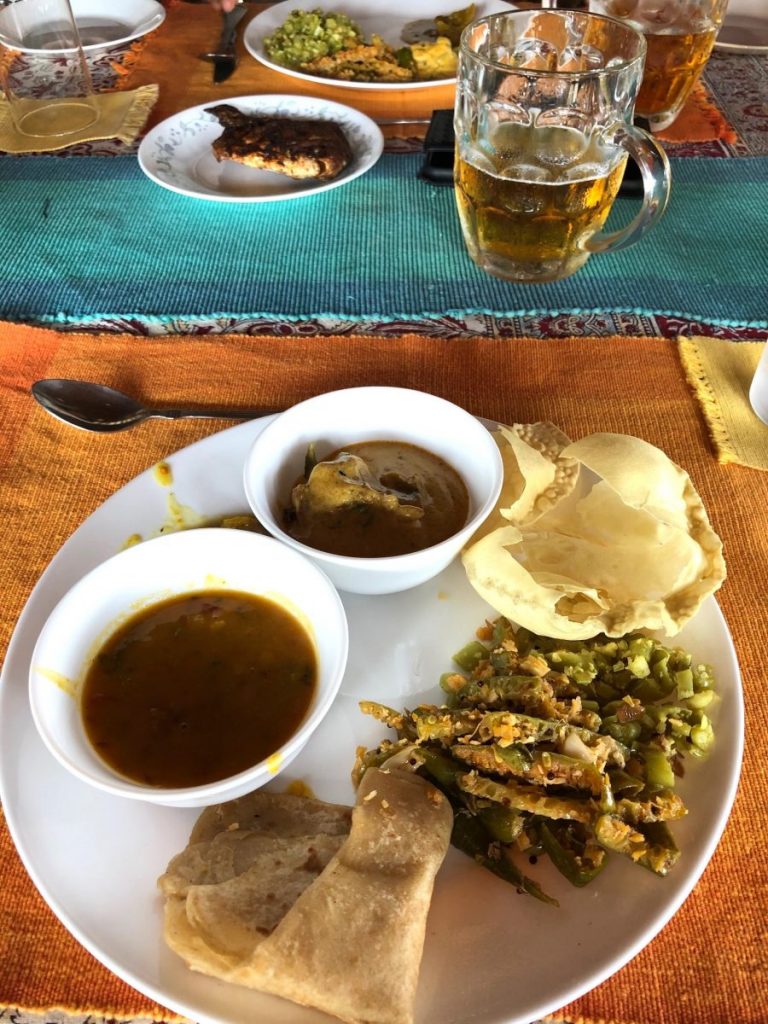
Lunch is served. YUM! * Photo: Heidi Sarna
And Kerala’s famous coconut seemed to make its way into nearly everything. The delicious pickled chutneys and relishes were also a big hit with our group.
A full bar on board offers humble Indian wines (including the Sula brand), beers (Kingfisher) and soda (Thums Up) as well as spirits, all at a la carte pricing.
Even if you vow to yourself, you’ll eat less tomorrow, it won’t happen. We always intended to take just one helping at dinner, to skip dessert, to decline a mug of refreshing beer after lunch. Oh well!
But no, this was a cruise of going with the flow in more ways than one. It was about indulging our senses, all of them, in the sights, the sounds and the tastes of Kerala’s backwaters. And what a sensory adventure it was.
RELATED: Heidi reviews a quirky cruise on India’s Brahmaputra River.
RELATED: Another Brahmaputra River cruise review; this one by Judi Cohen.
Know Before You Go on a Kerala Backwaters Cruise
Itineraries/Fares for a Kerala Backwaters Cruise
7-night Vaikundam cruises start at $1,825 USD per person per week (based on double occupancy) and include all excursions and meals.
(Note: Beer, wine and other spirits are not included, but are sold on board. When booking, if you enjoy drinking, be sure to mention that you’d like local beer or whiskey, or whatever your preferences are, so that Vaikundam’s bar can be stocked.)
Logistics of a Kerala Backwaters Cruise
You must fly in and out of Kochi, in Kerala; many flights from the US would connect through Delhi or Mumbai. Before the cruise, we stayed for two nights at the lovely Taj Malabar Resort & Spa in Cochin.

The Taj Malabar Resort & Spa in Cochin. * Photo: Heidi Sarna
Kerala Backwaters Cruise Tips & Advice
- Water levels and tides can vary, so the itinerary will be somewhat fluid.
- To visit temples, you must remove your shoes; many will allow socks, so bring extras if you prefer wearing them to being barefooted.
- Women should dress modestly and not wear sleeveless or crop tops, or shorts; thin cotton tops are a good option as are cargo pants or leggings with long tops over them.
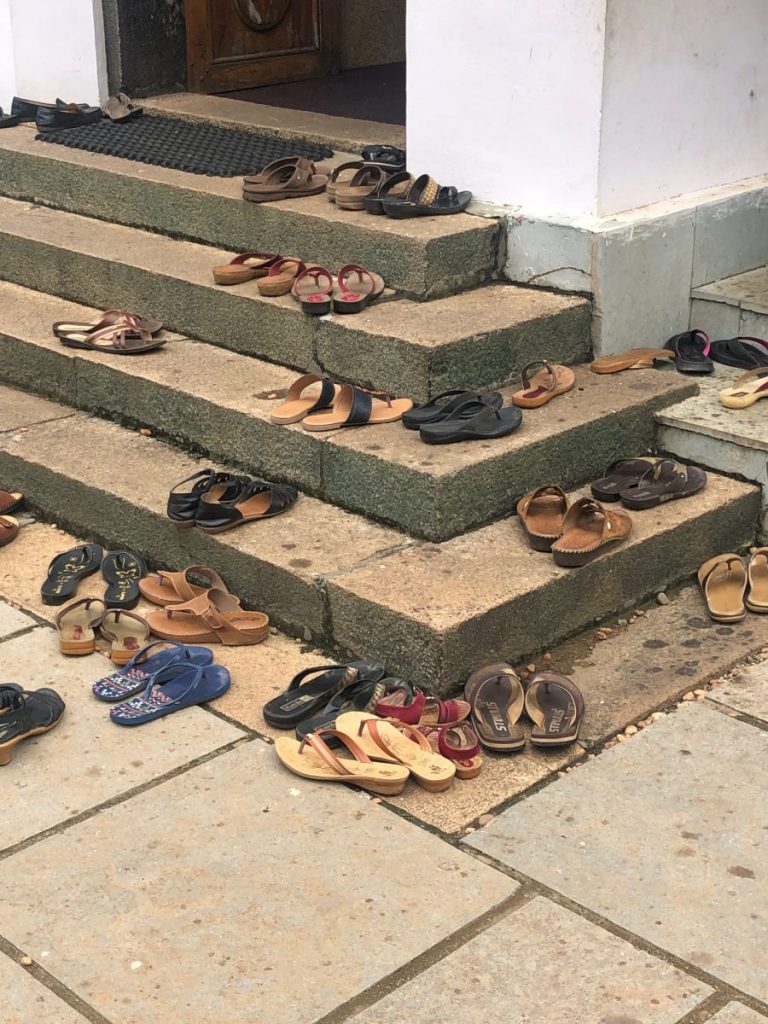
Removing your shoes is several times a day is par for the course. * Photo: Heidi Sarna
Weather in Kerala
Kerala’s climate is tropical and so it’s warm and humid all year-round. There are two rainy seasons brought on by the seasonal monsoons, in June and mid-October, when there is typically rain for no more than a few hours a day (note the low-lying backwaters are prone to flooding). Temperatures year-round see highs in the 80s (F) and lows in the 70s (F).
Cruising Season for Kerala Backwaters
The main Kerala backwaters cruising season is October through April.
Money Matters in India
The Indian rupee (INR) is the official currency; credit cards are accepted in larger shops.
Interested in a Kerala Backwaters Cruise?
For more info about a Kerala Backwaters cruise, contact Adventure Resorts & Cruises at www.adventurerivercruises.com.
If you’d like our favorite travel advisor Kevin to help you book a river cruise in India, plus perhaps some pre/post-cruise hotel nights and tours, drop me an email (Heidi@QuirkyCruise.com) and I’ll connect you pronto!
![]()
Don’t miss a post about small-ship cruising, subscribe to QuirkyCruise.com for monthly updates & special offers!
© This article is protected by copyright, no part may be reproduced by any process without written permission from the author. All Rights Reserved. QuirkyCruise.com.

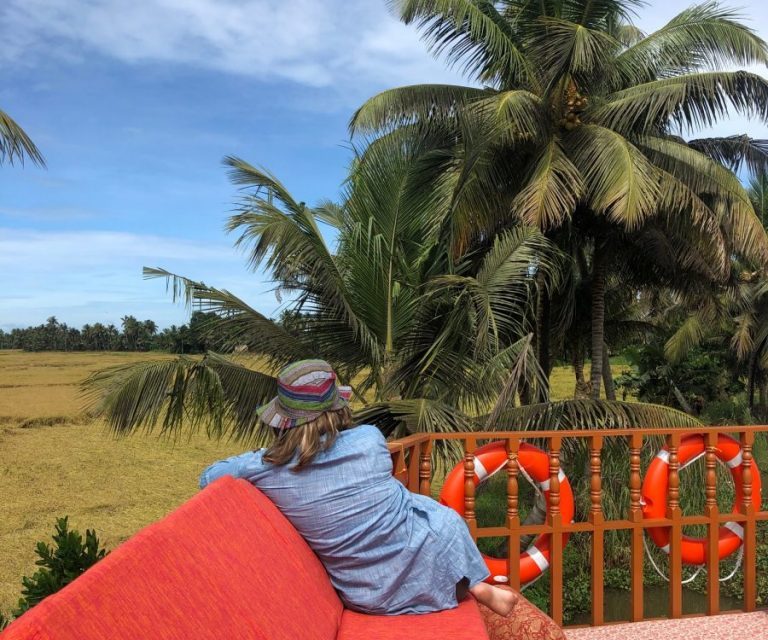
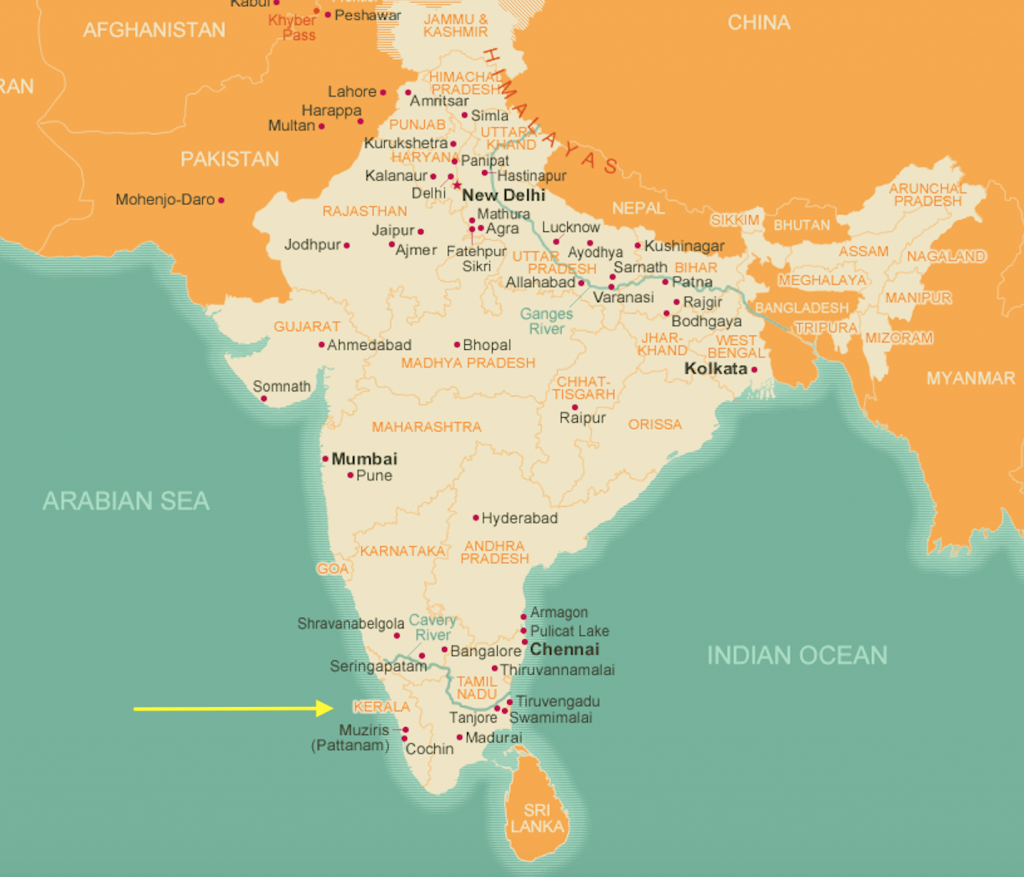
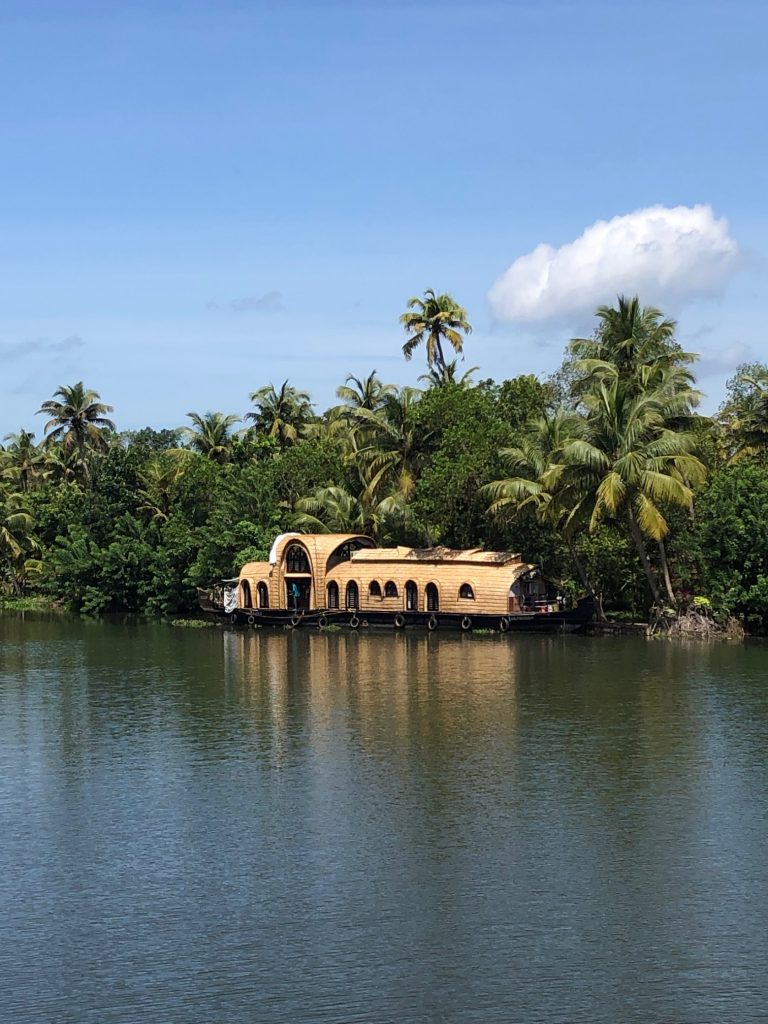
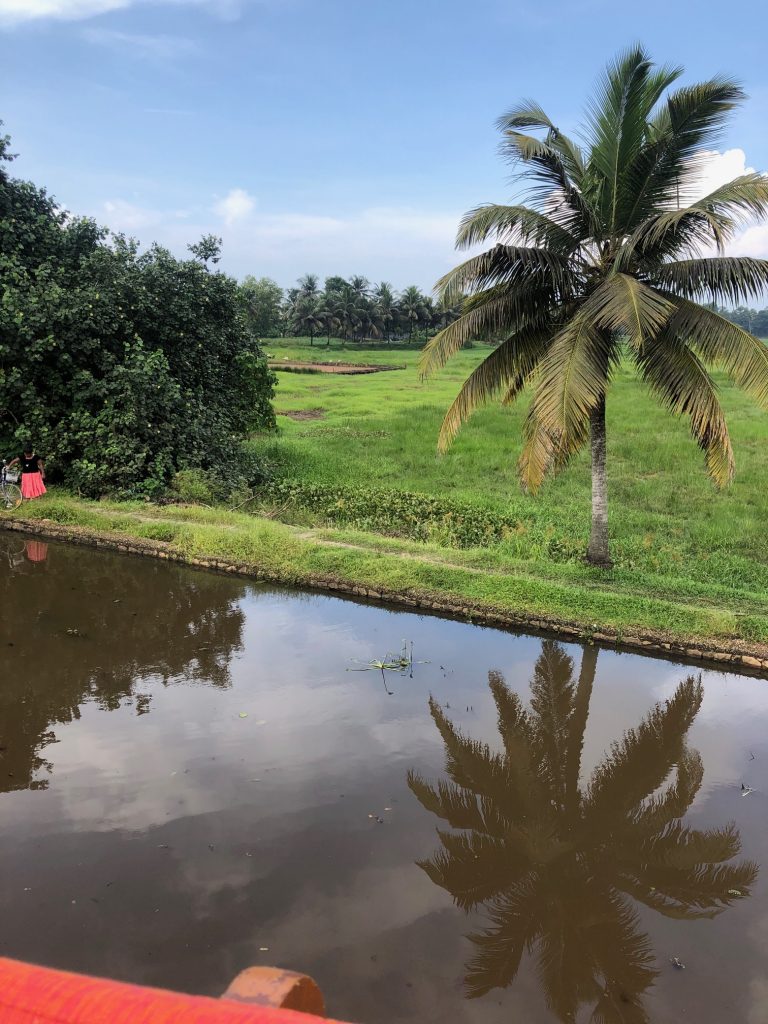
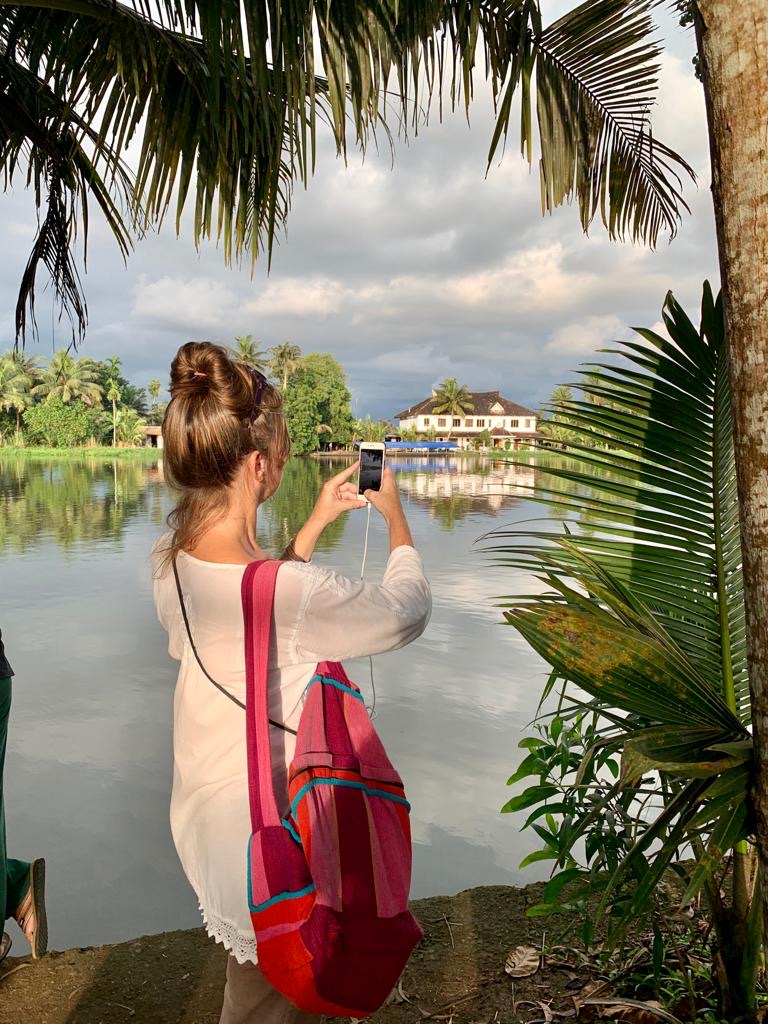

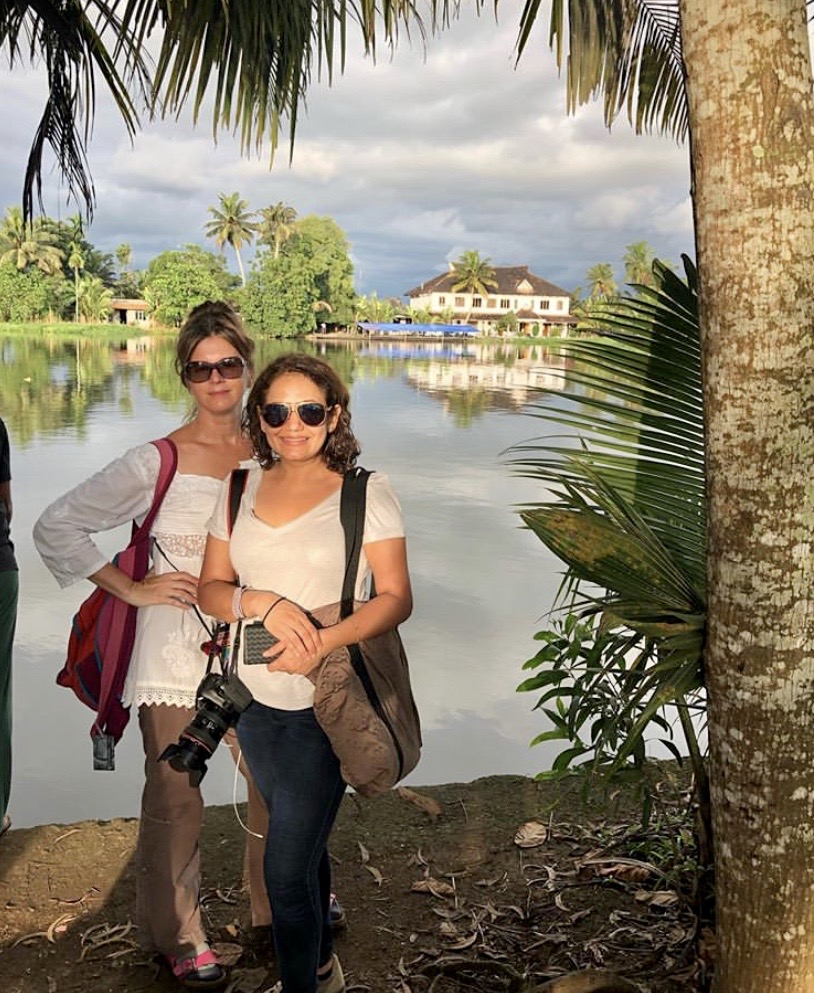
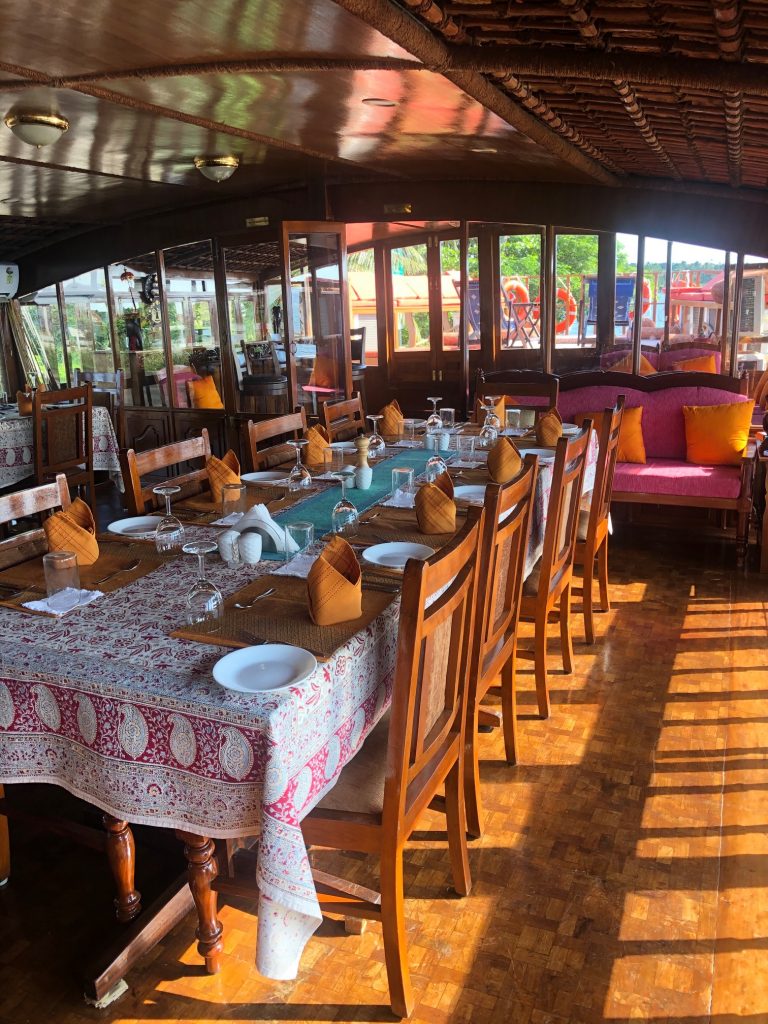
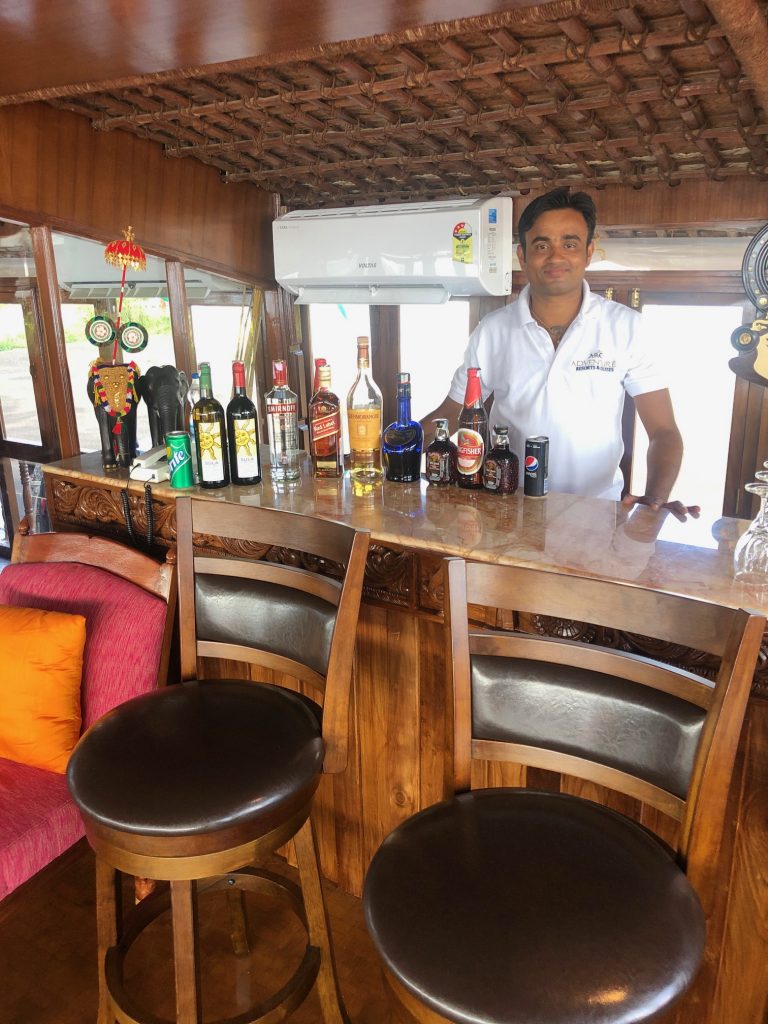
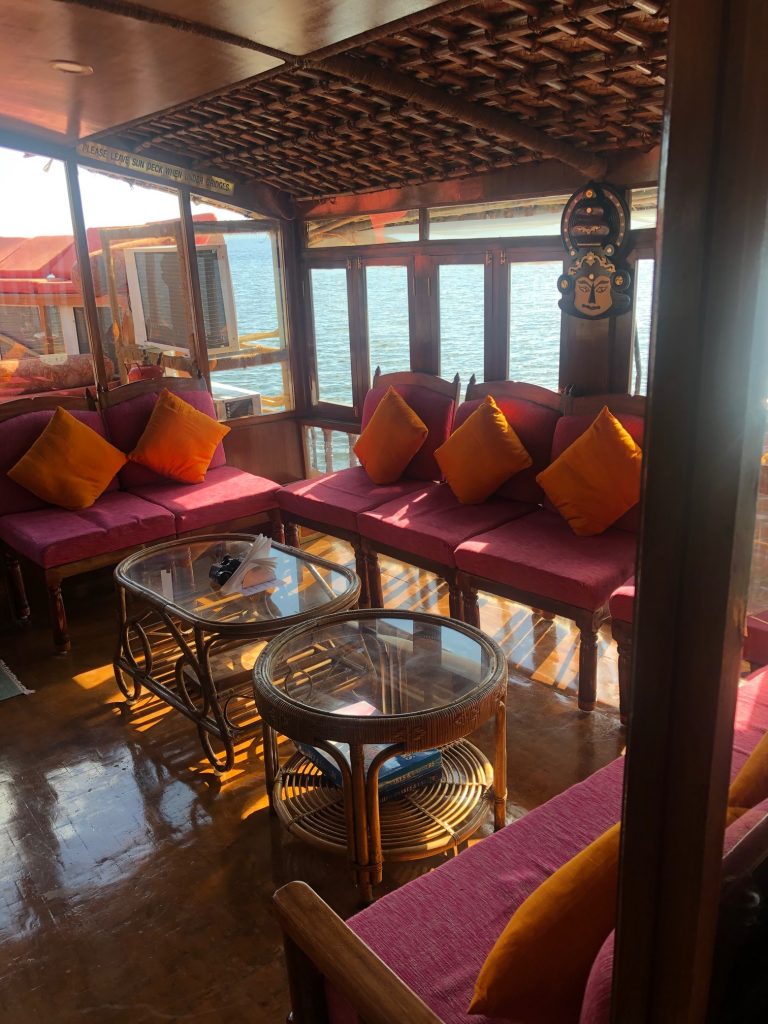
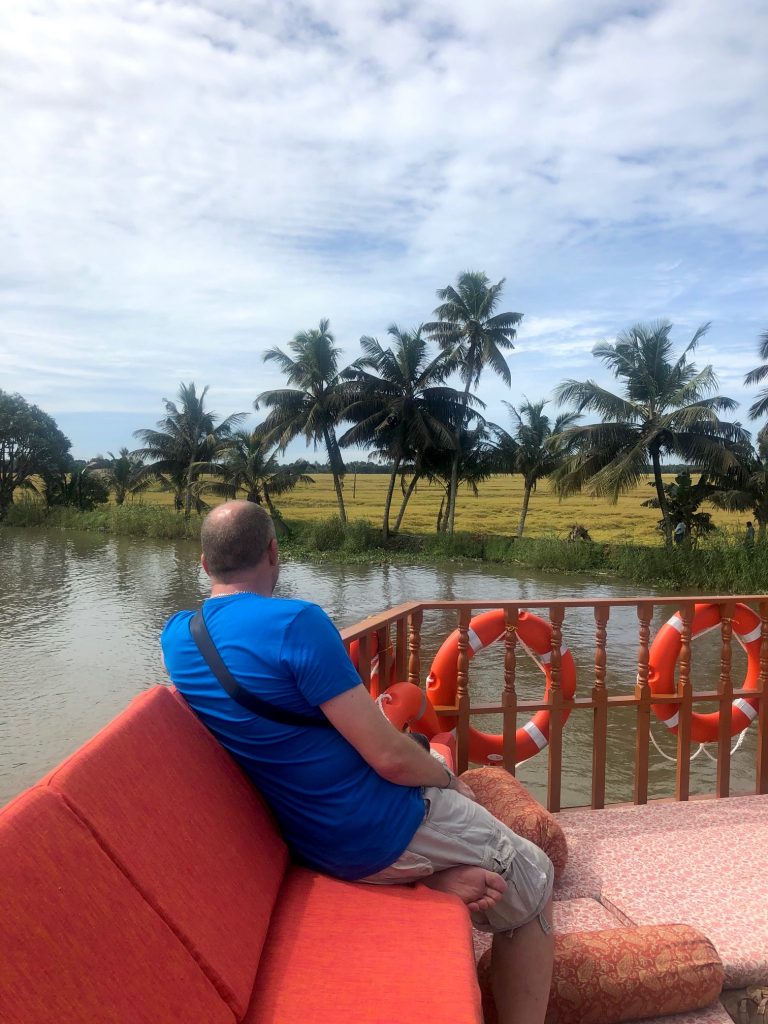
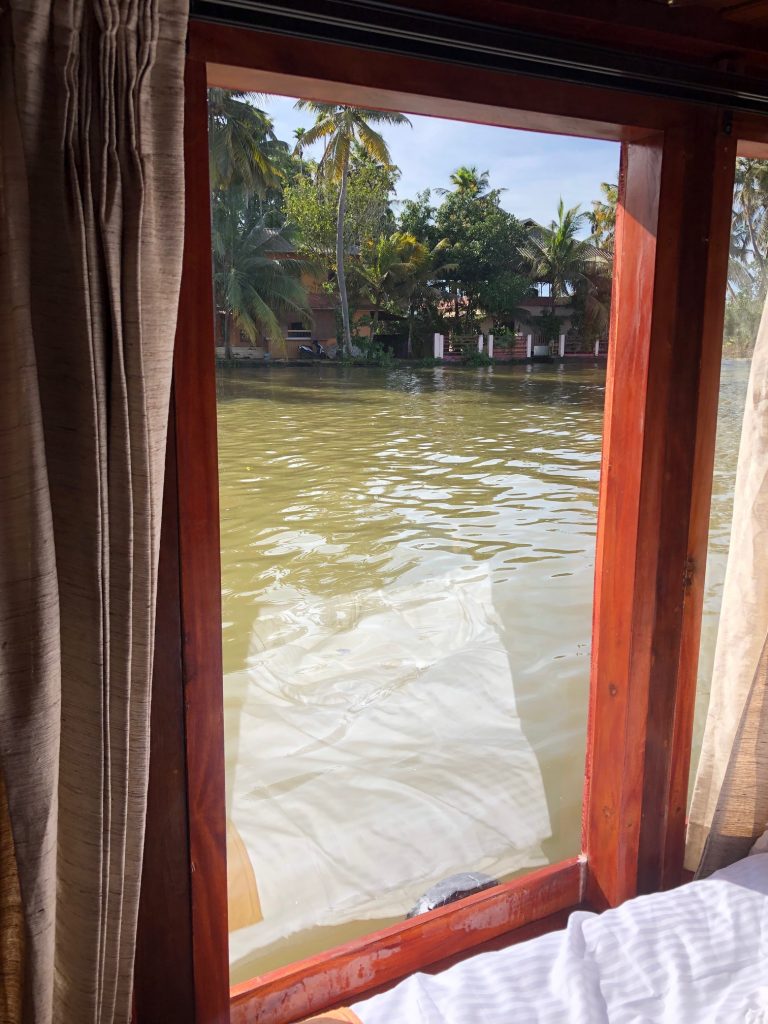
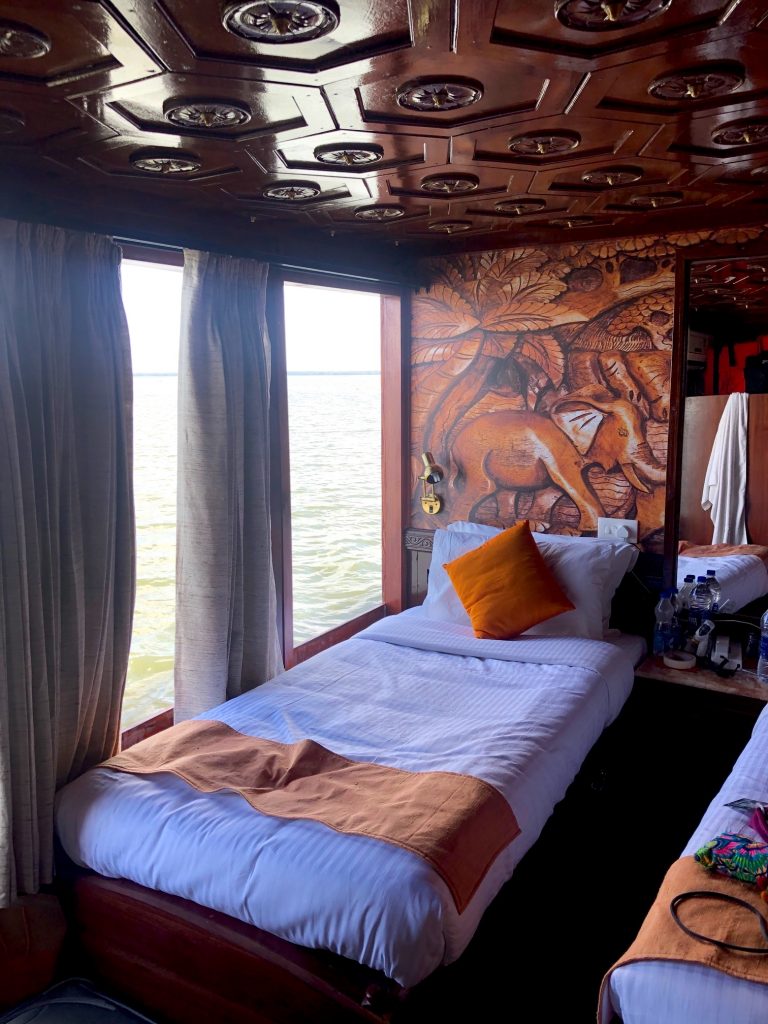
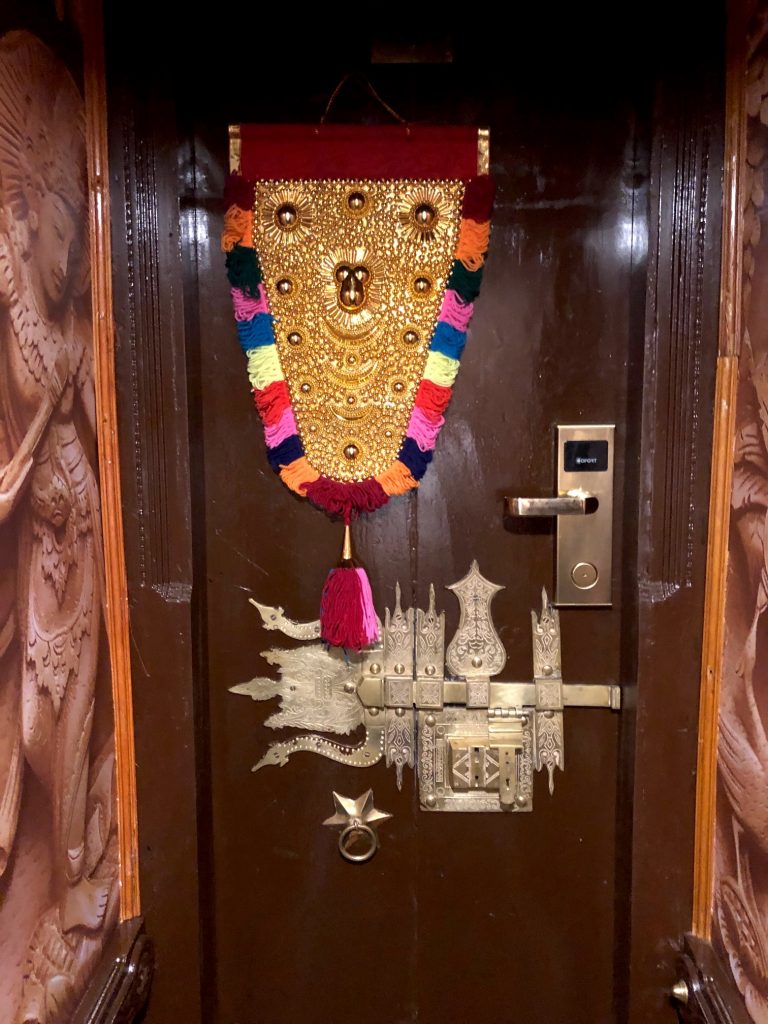
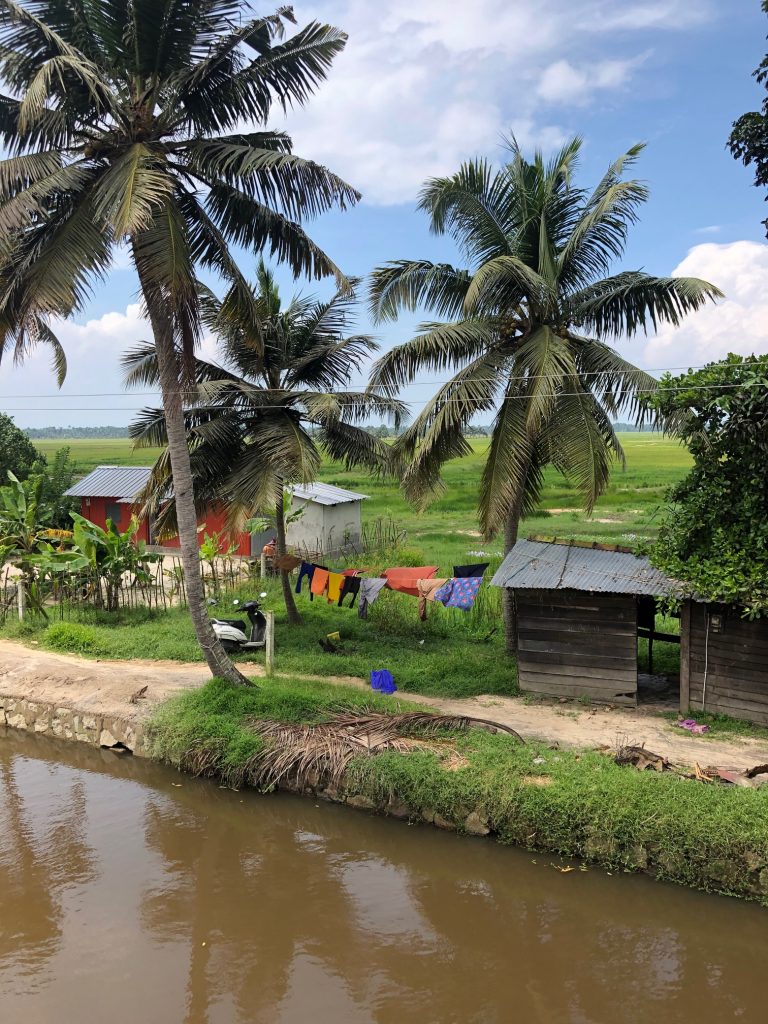
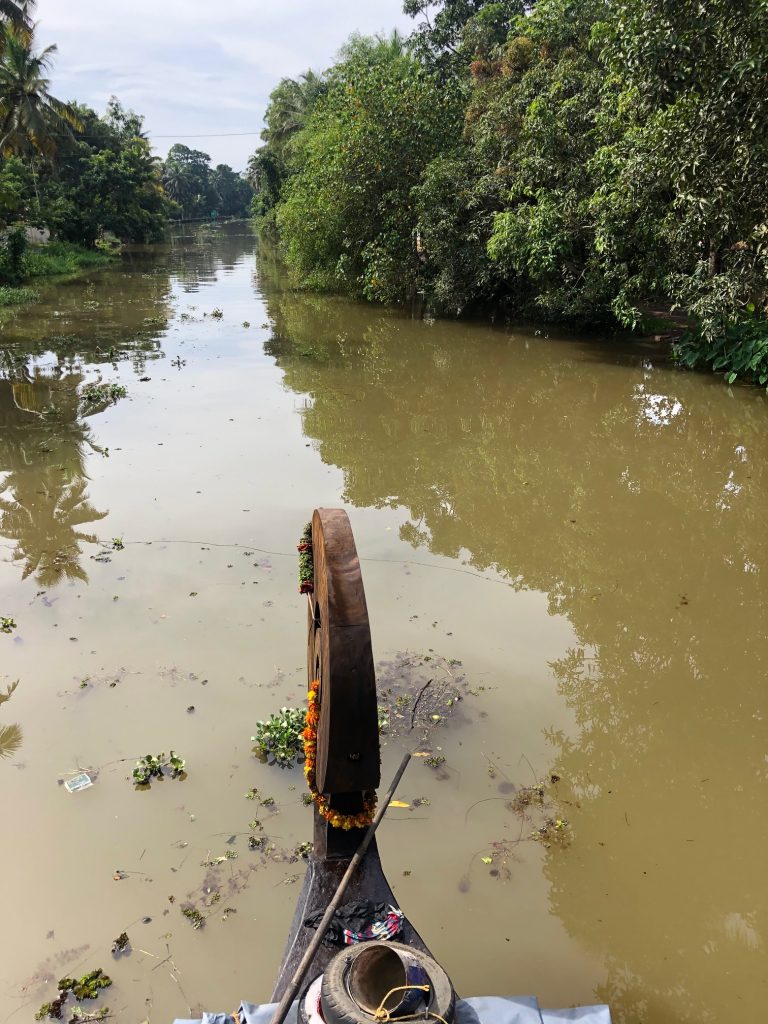
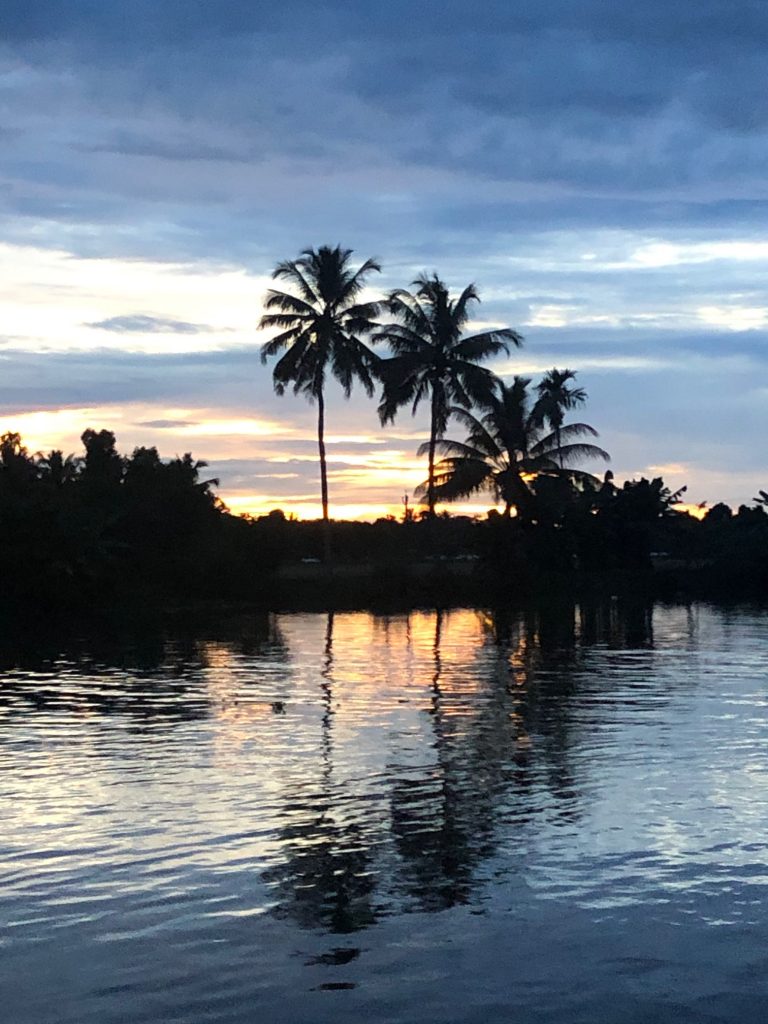
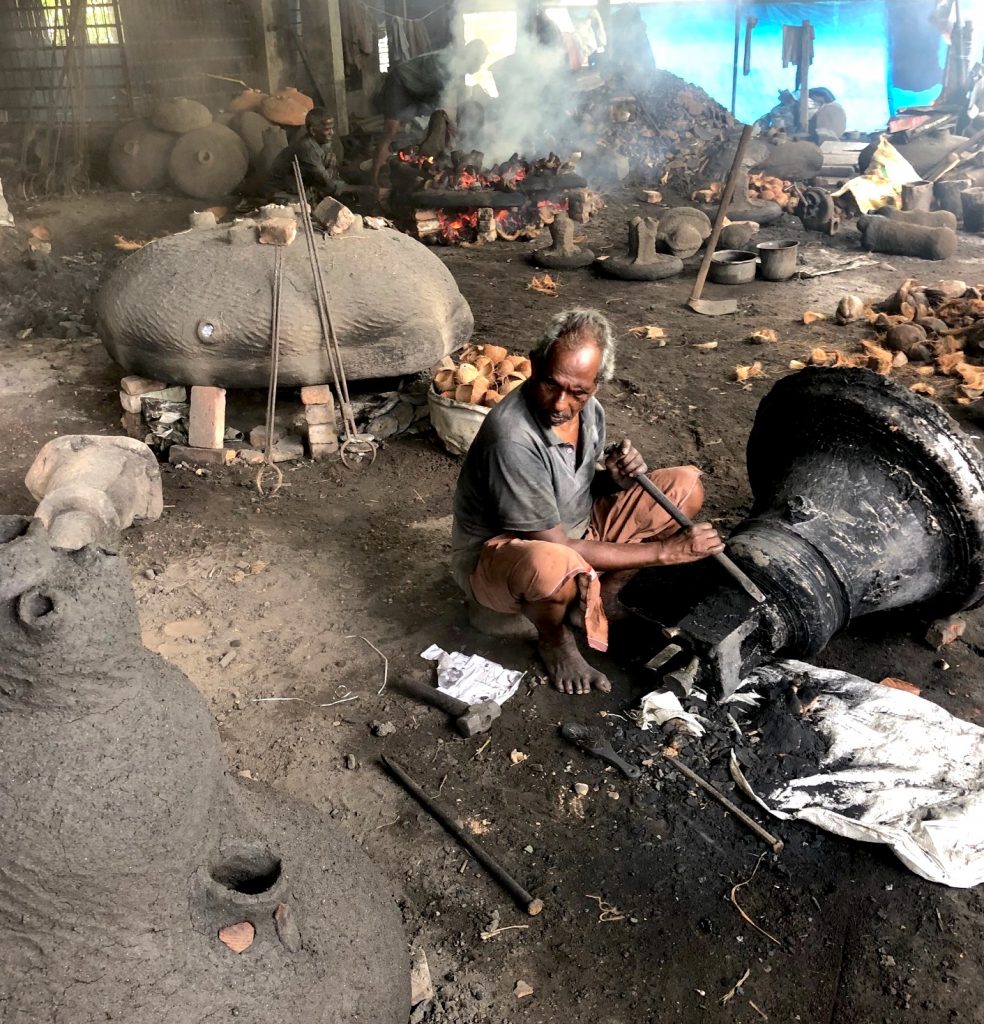
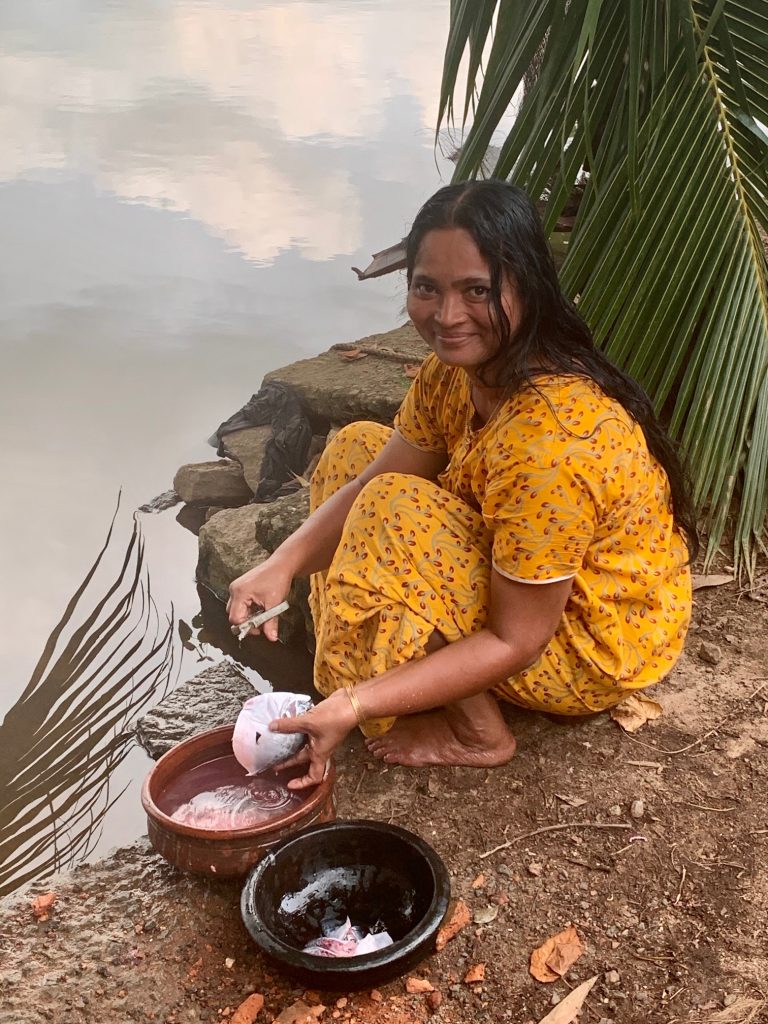
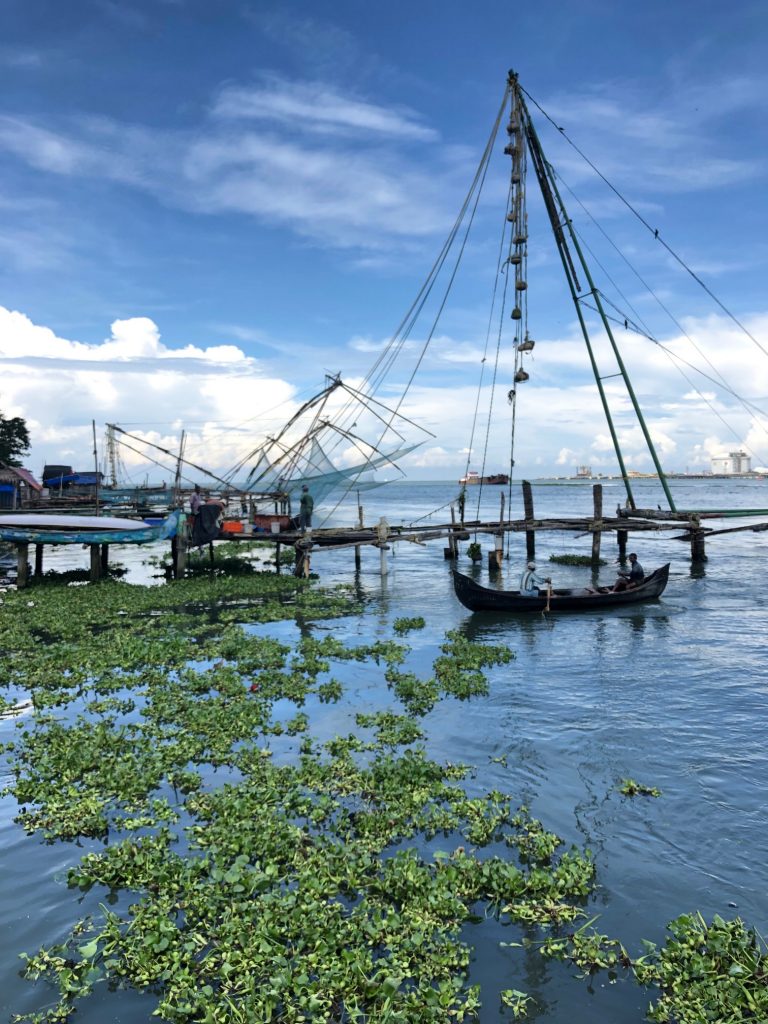
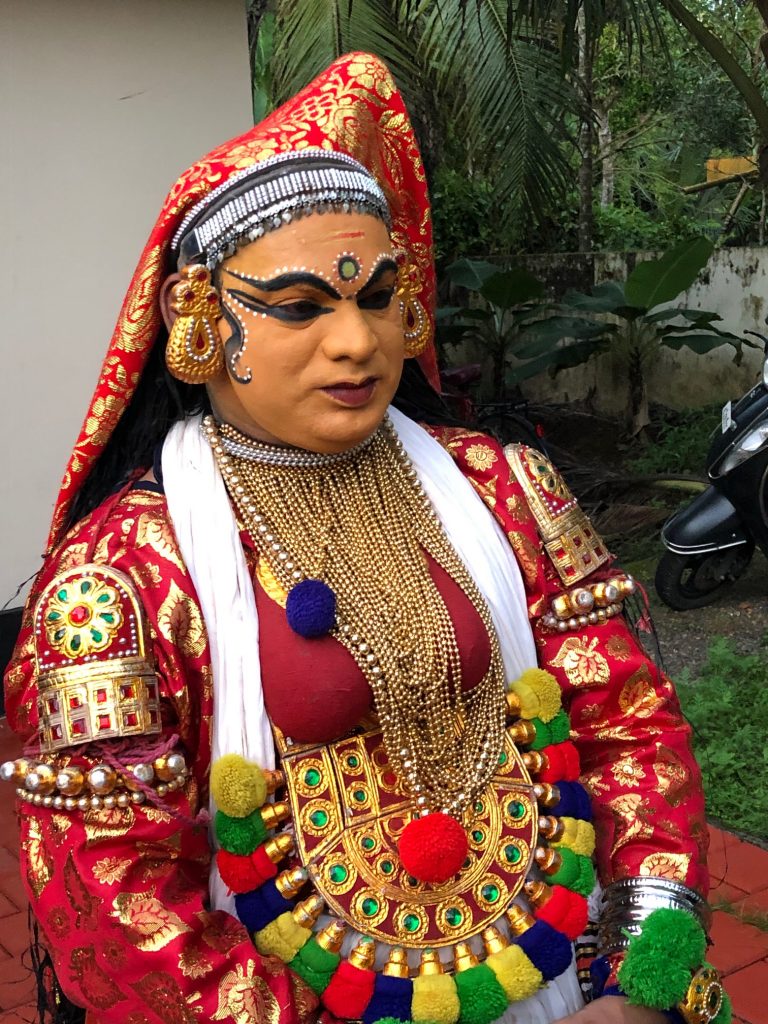
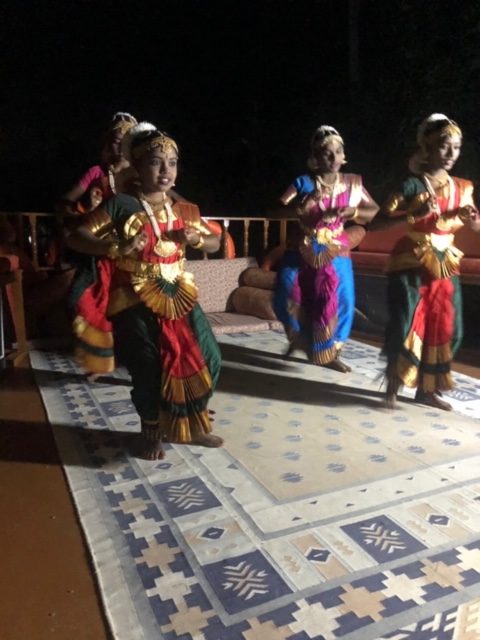
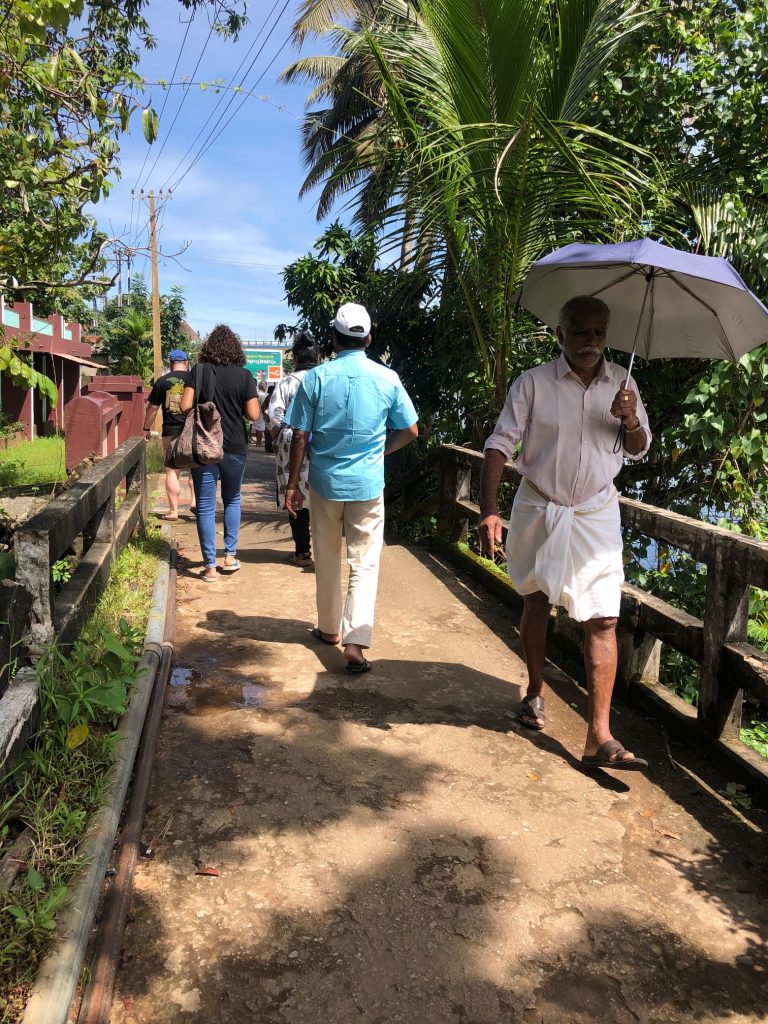
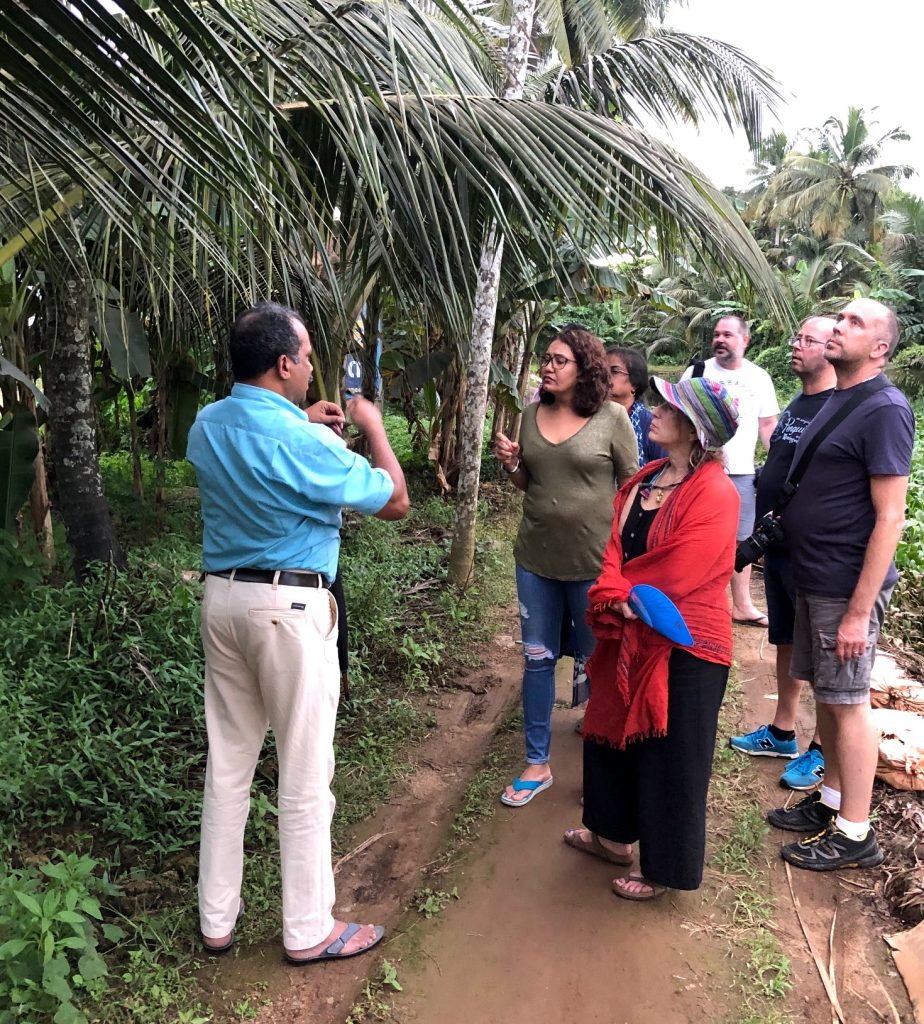
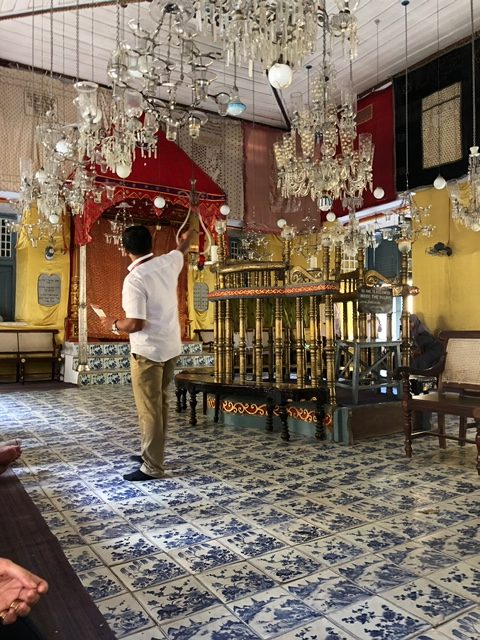
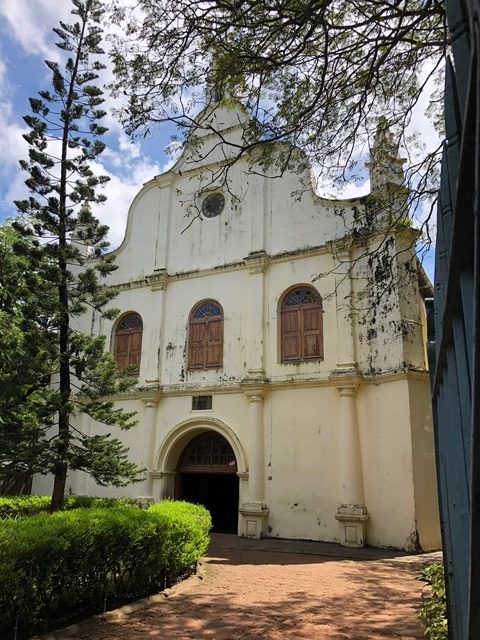
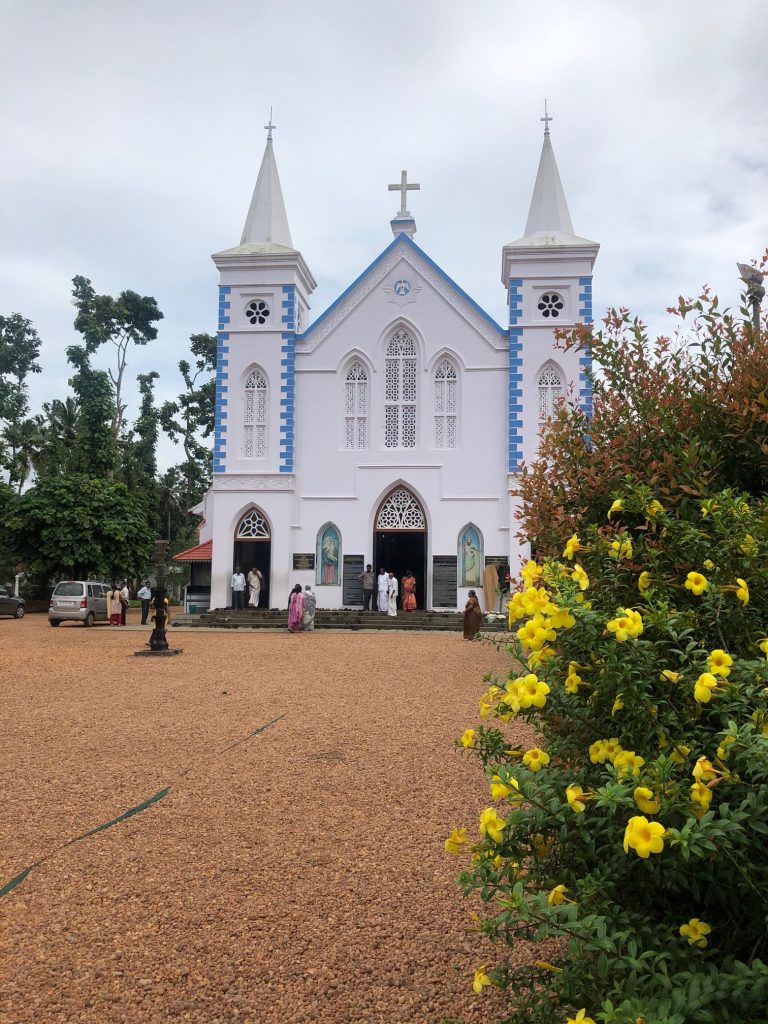
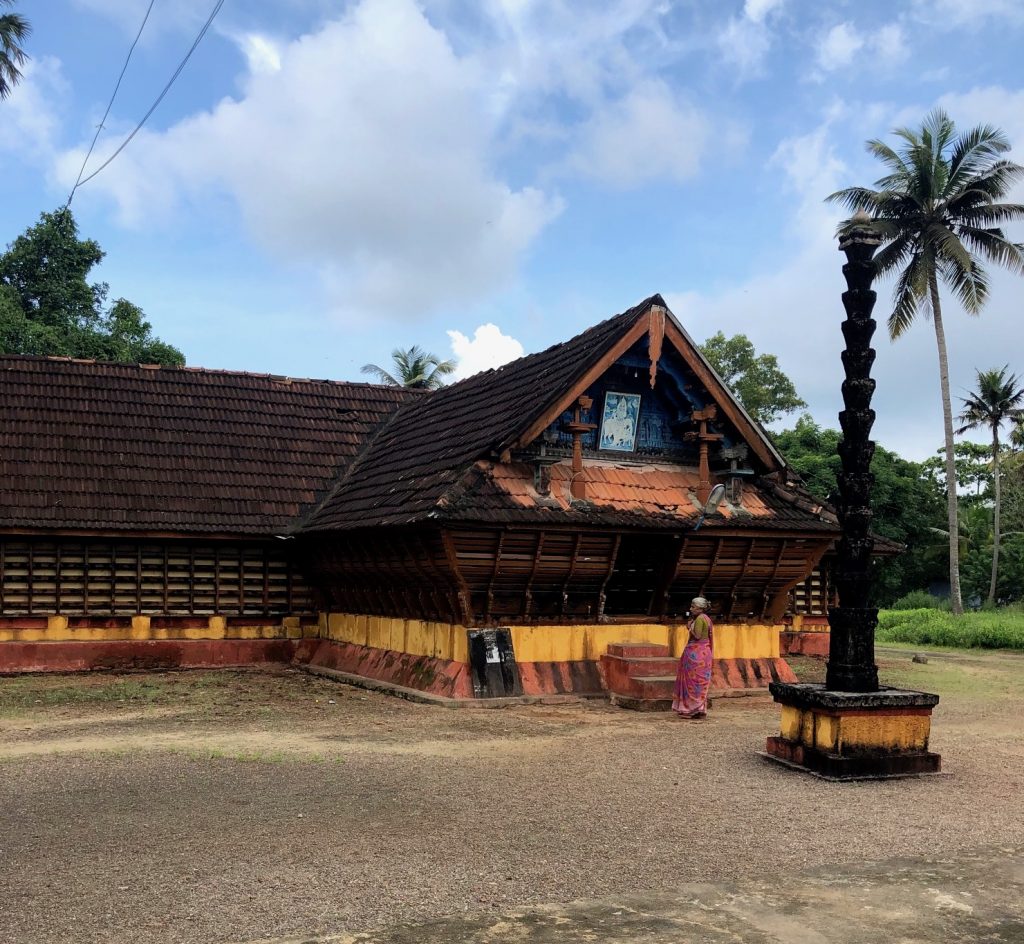
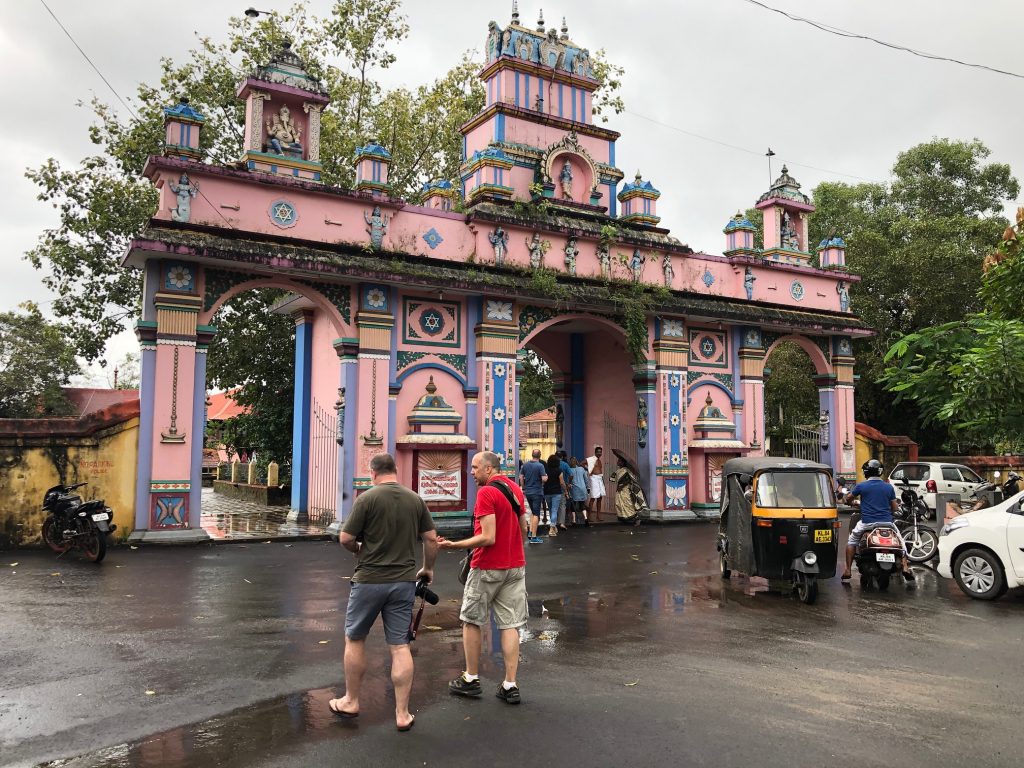
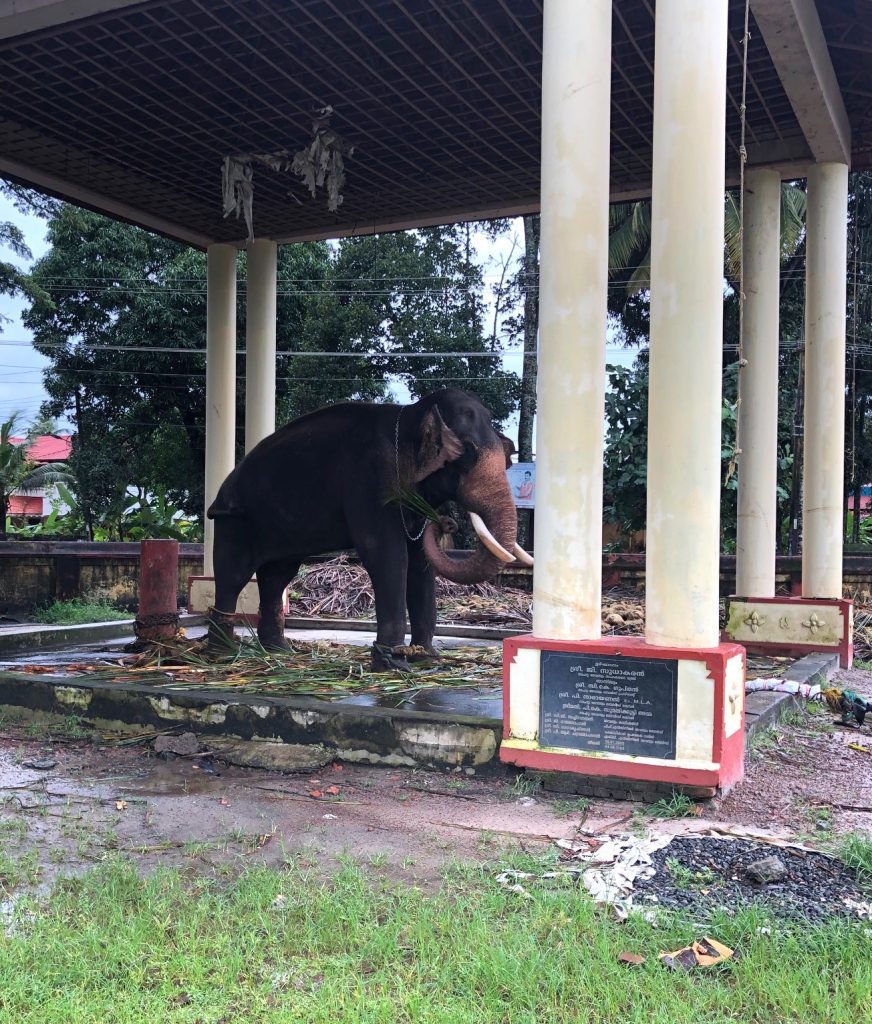
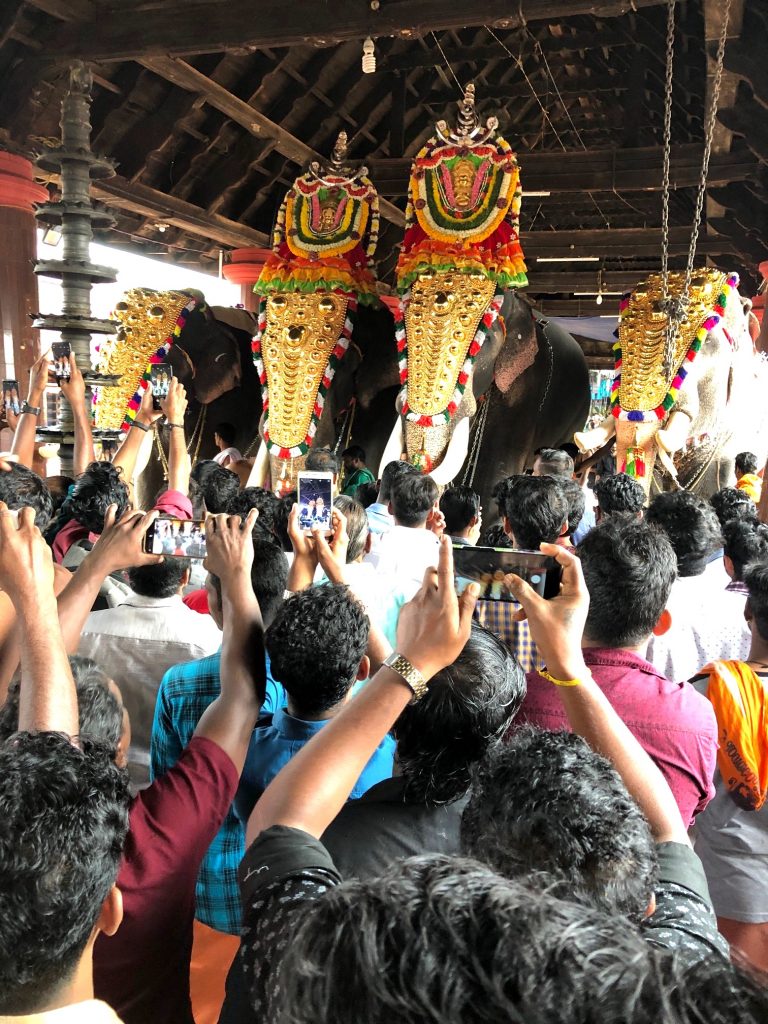
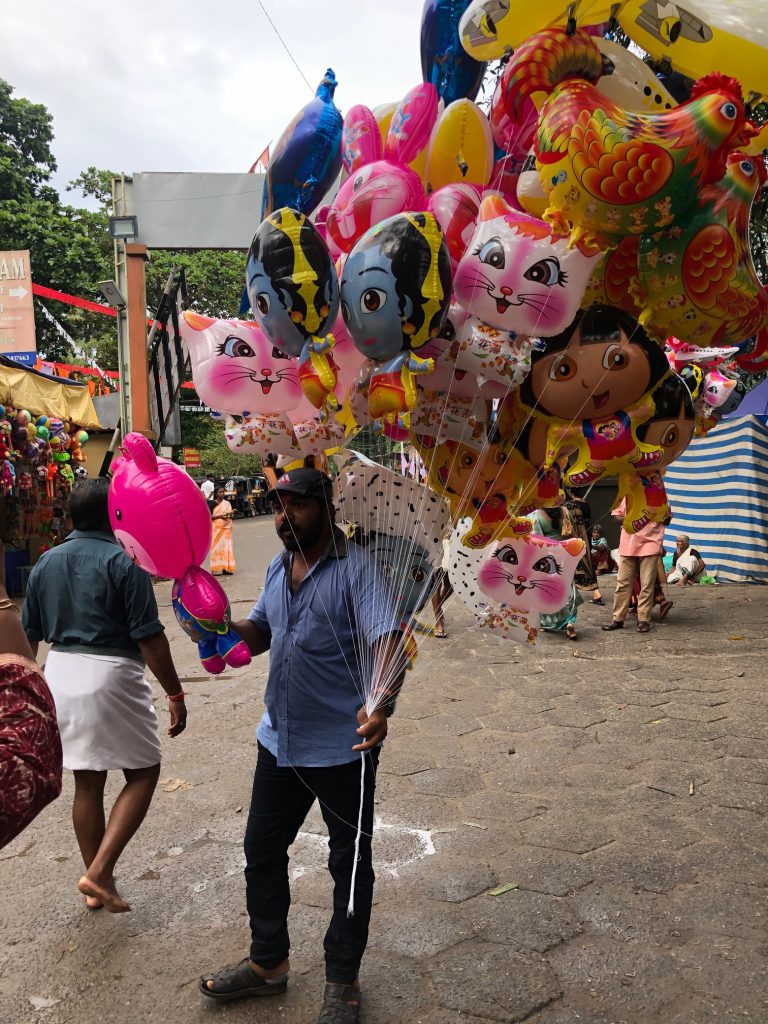
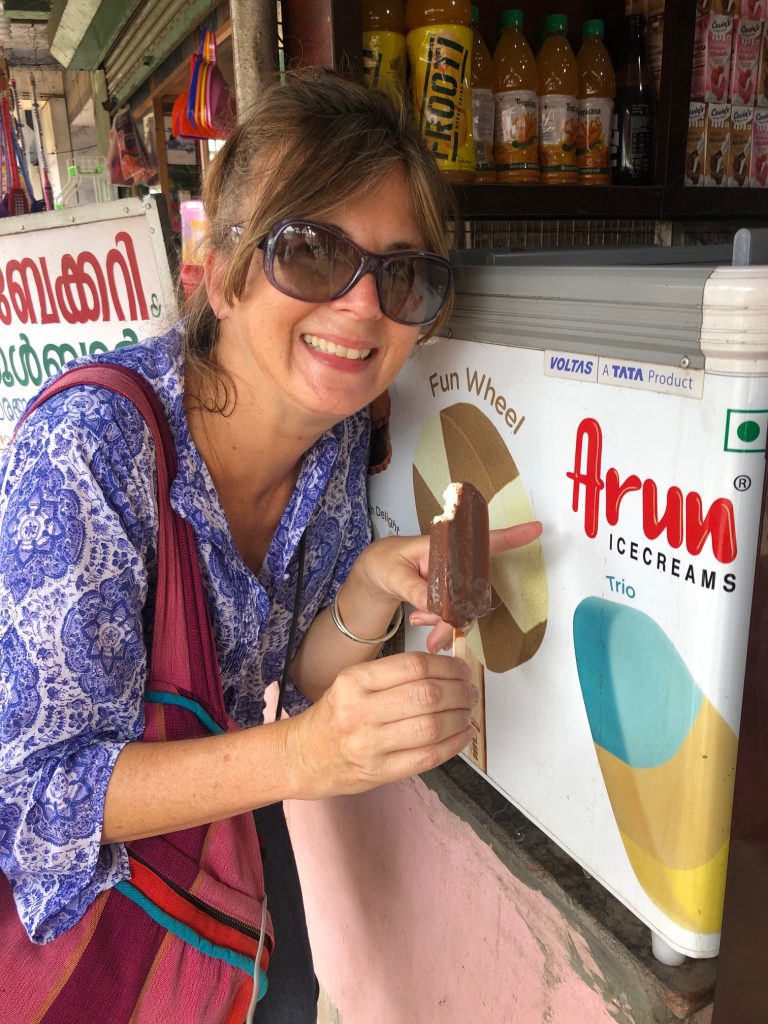
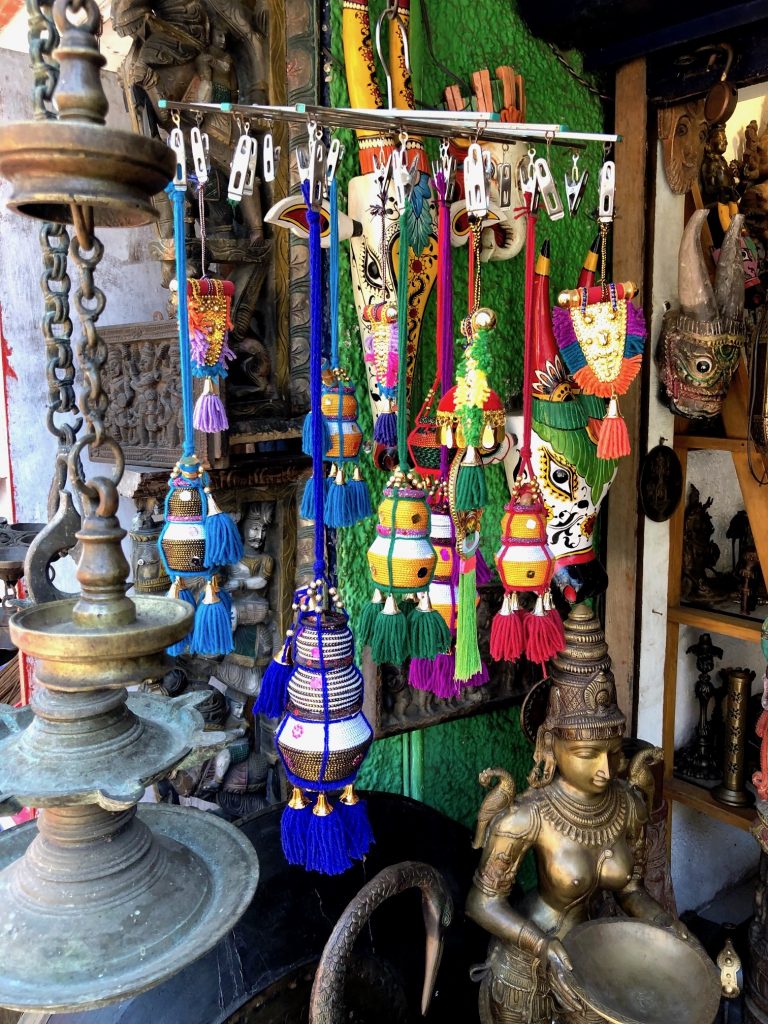
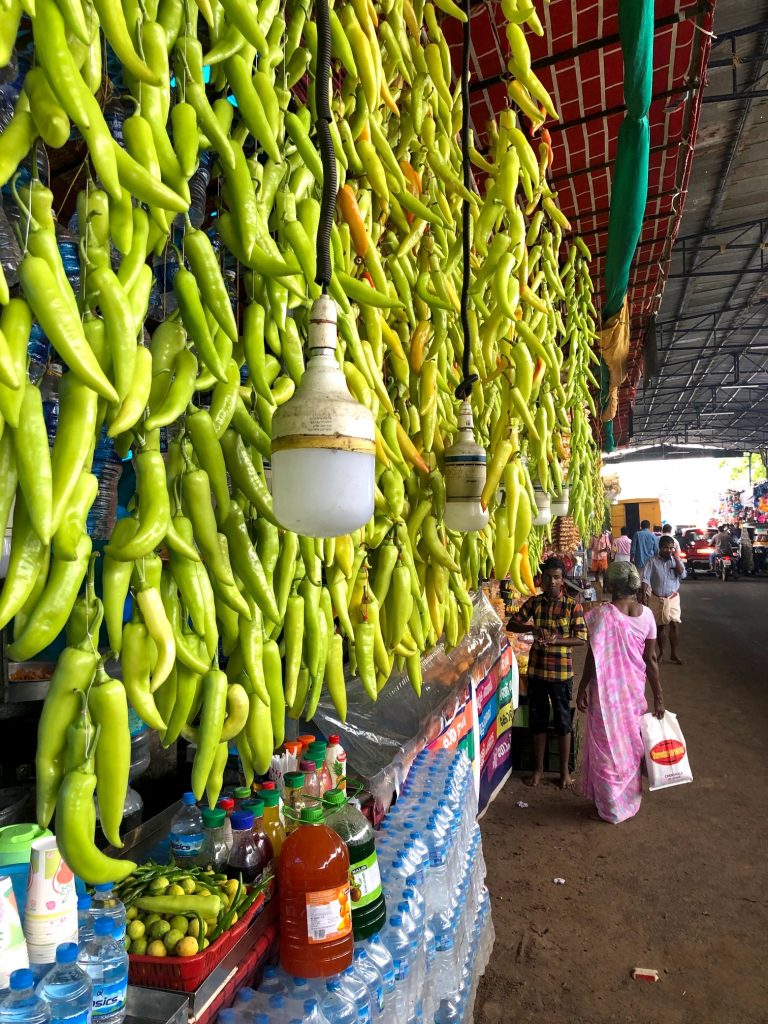
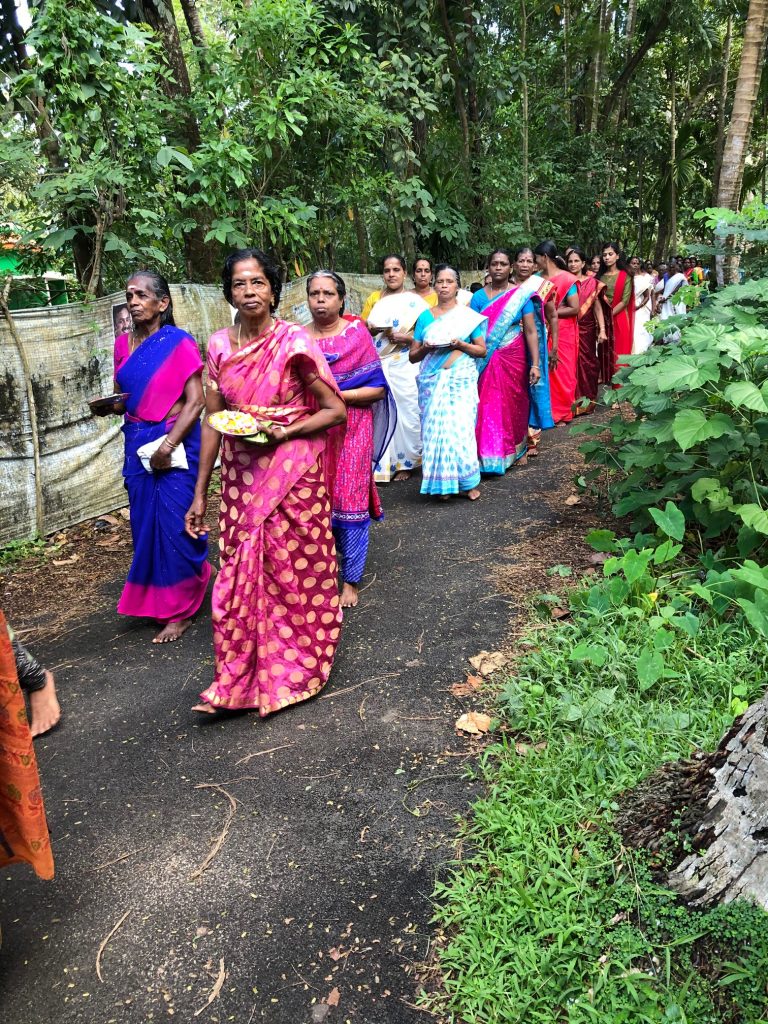
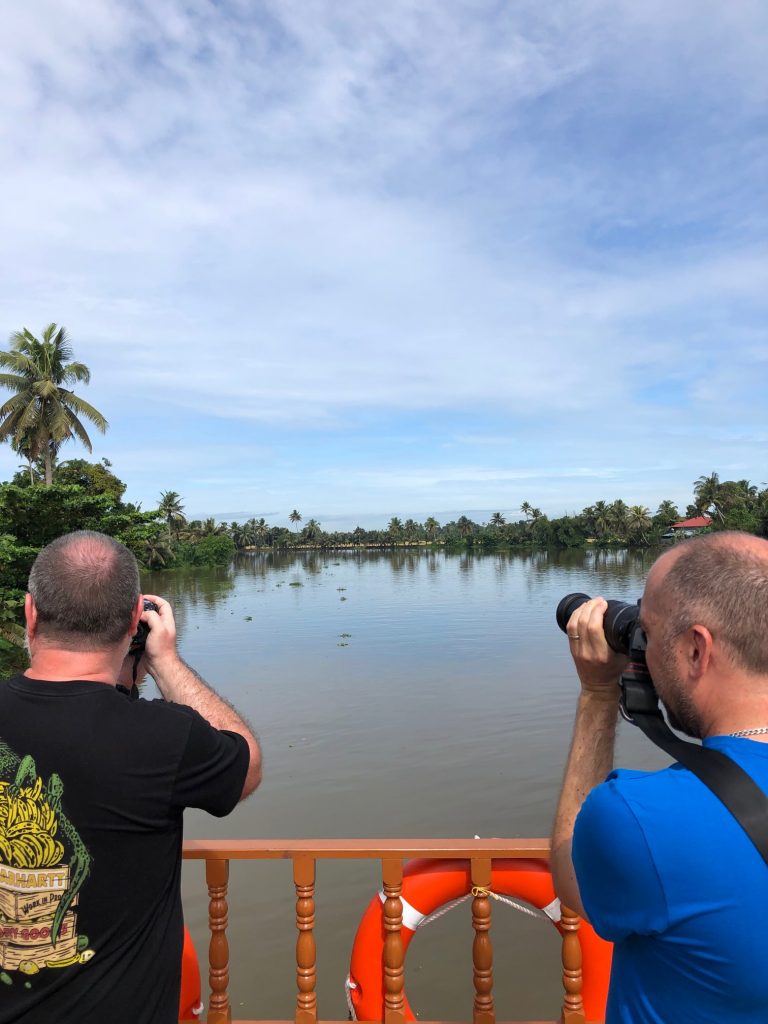
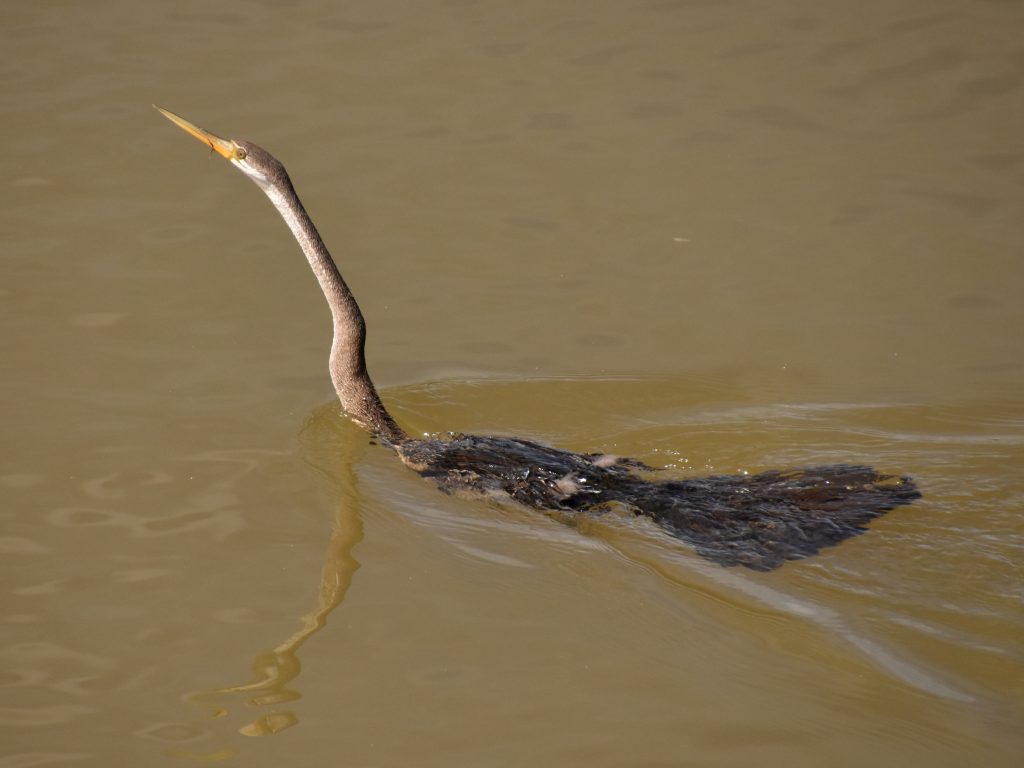
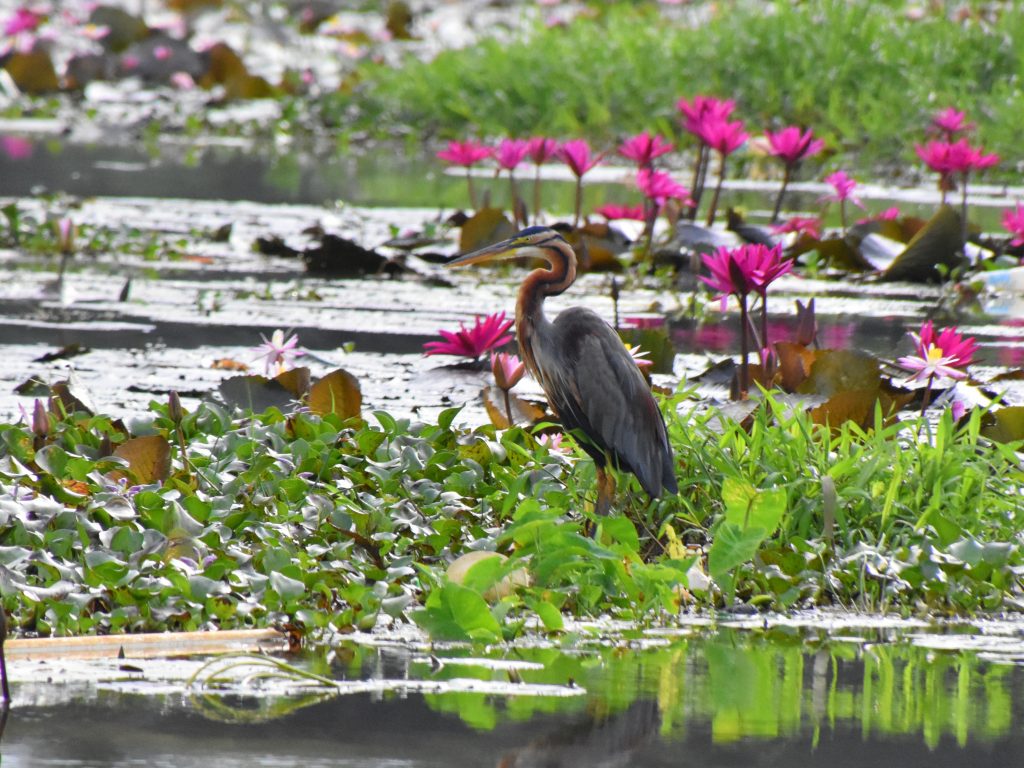
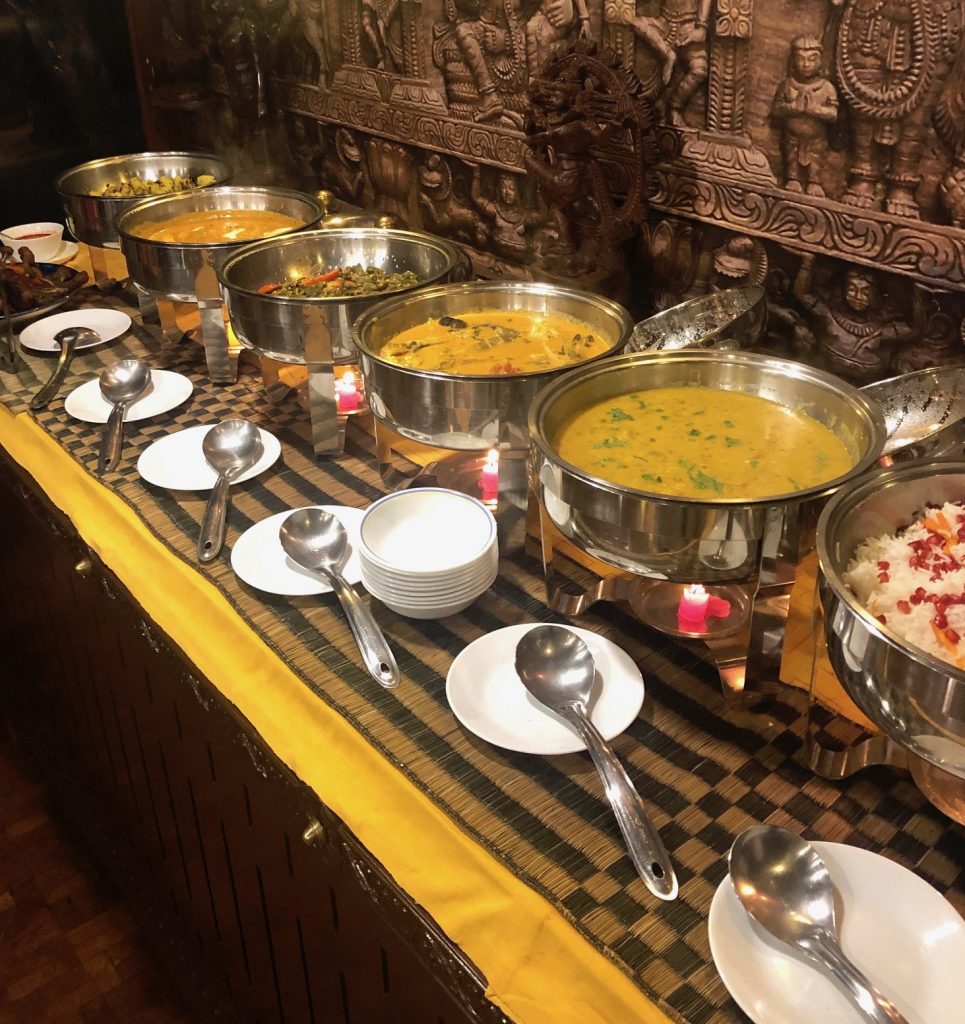

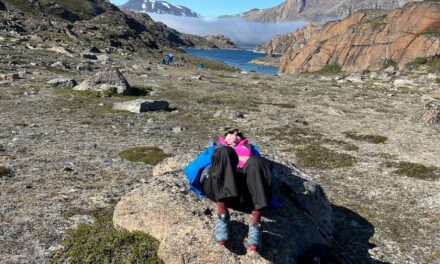

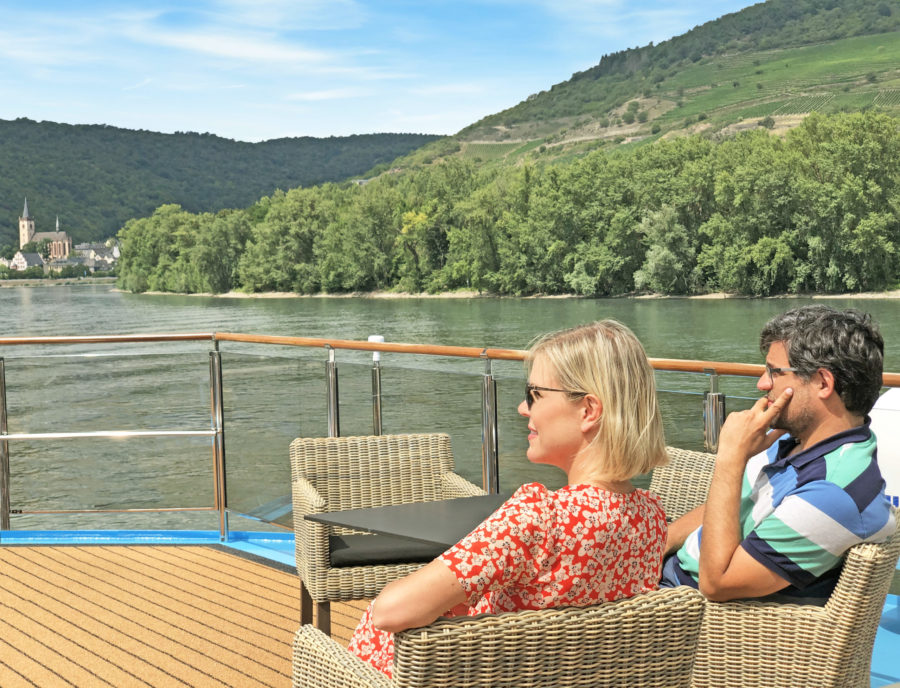

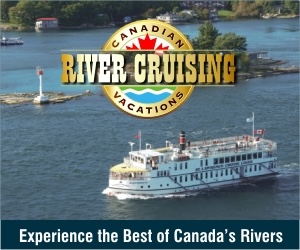






 HEIDI SARNA
HEIDI SARNA

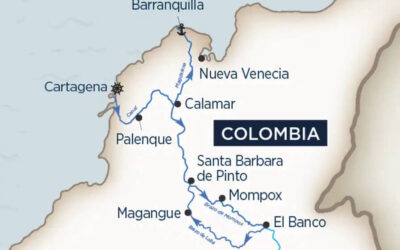
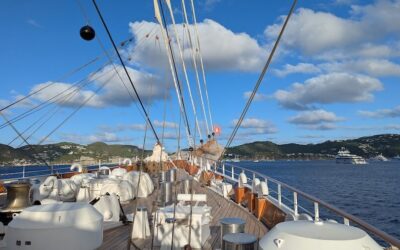
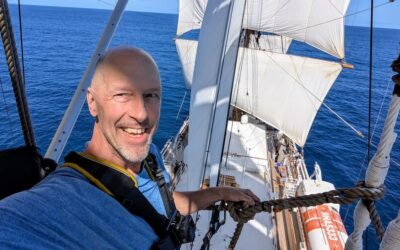
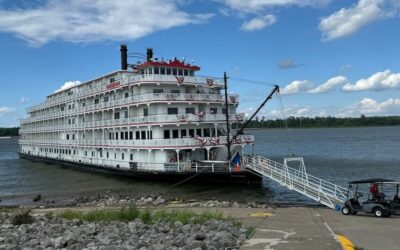
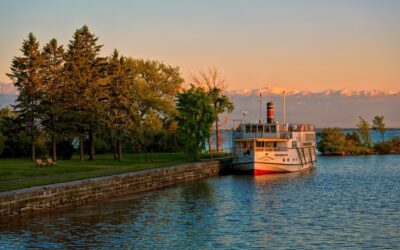
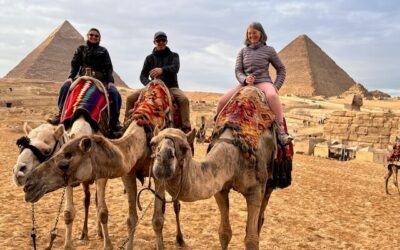
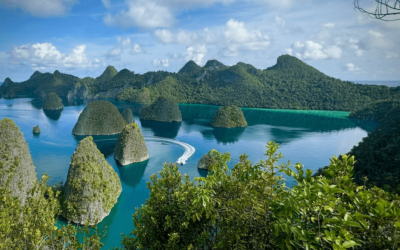
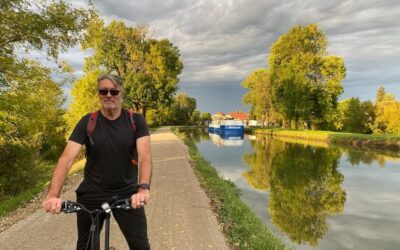
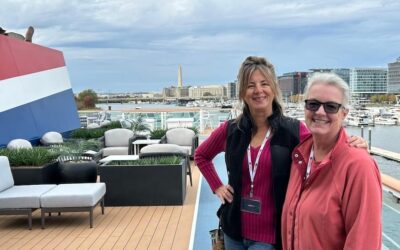
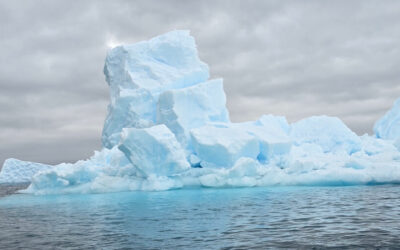

Fabulous story line about a most unusual place supported by stunning photos that highlight the exotic surroundings.
It was such a special trip!! 🙂
What a wonderful story, superb images and video! This is why we travel — or dream of traveling. Thank you, Heidi and QuirkyCruise, for sharing the experience so evocatively!
Thank you so much! This kind of special trip is exactly why we started QuirkyCruise. 🙂
A fascinating place and a superbly detailed story, Heidi, you make me want to go there and enjoy South India. Thank you!
Thank you Adriano! You’d love this one I’m sure!!